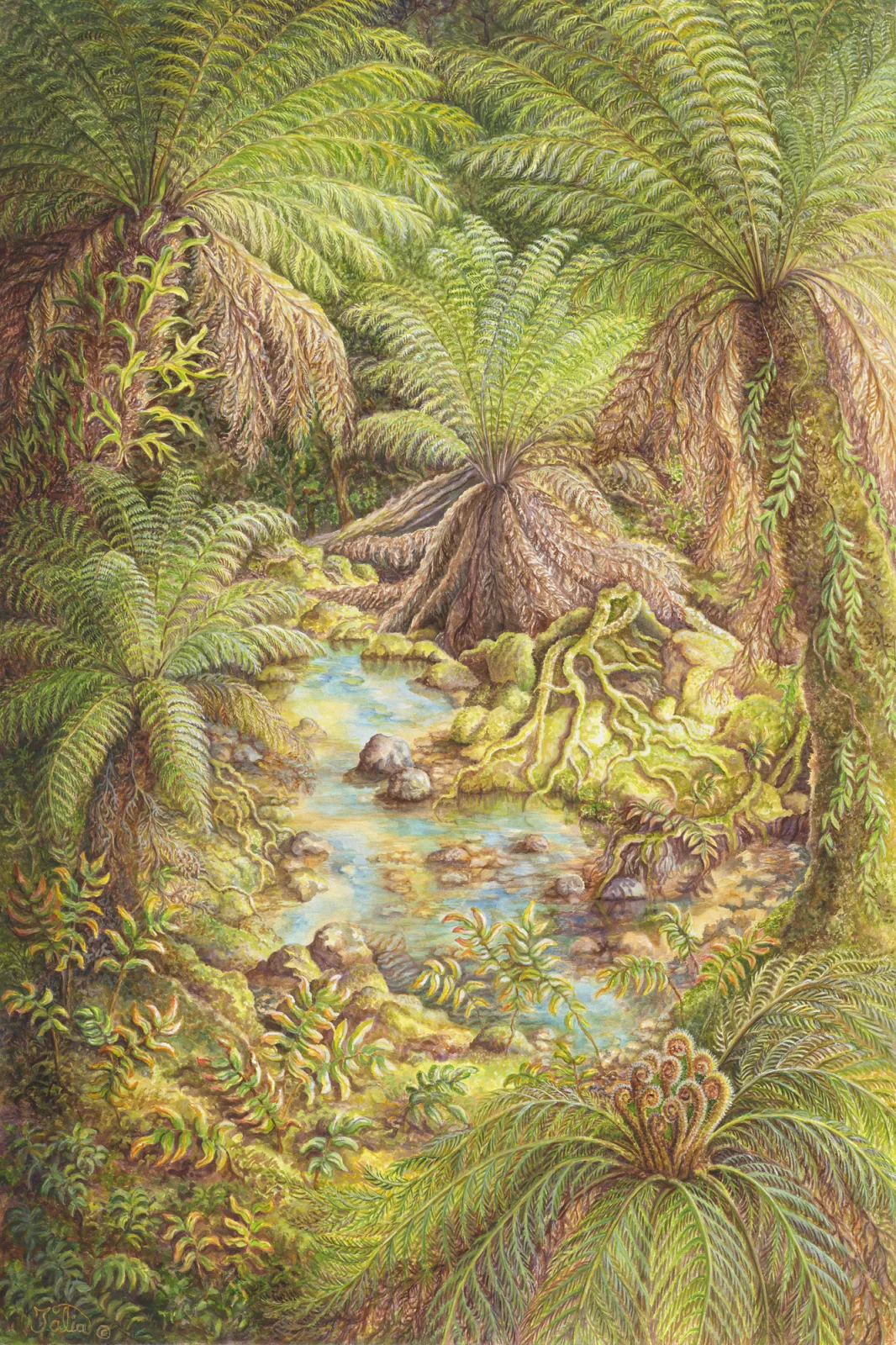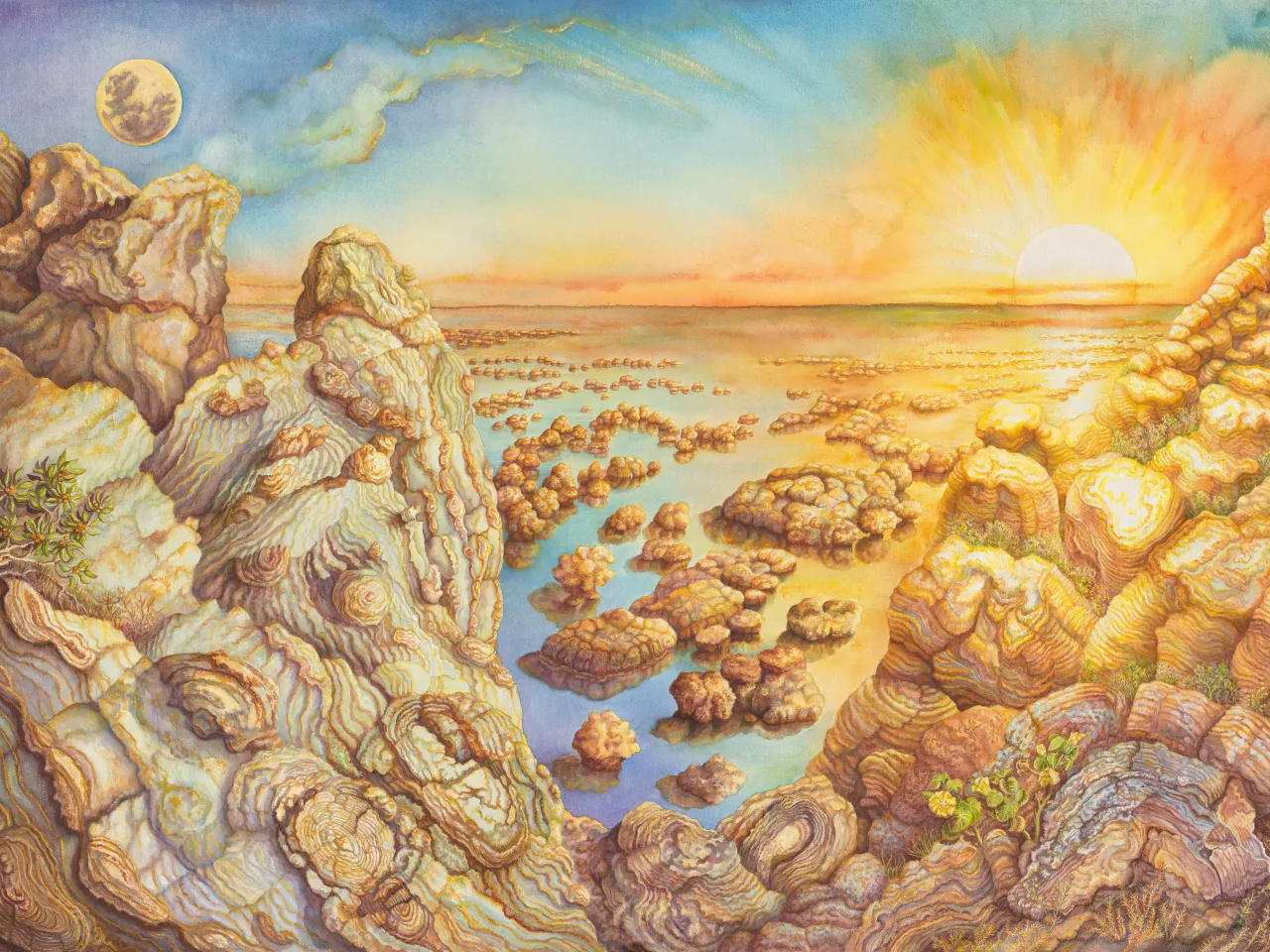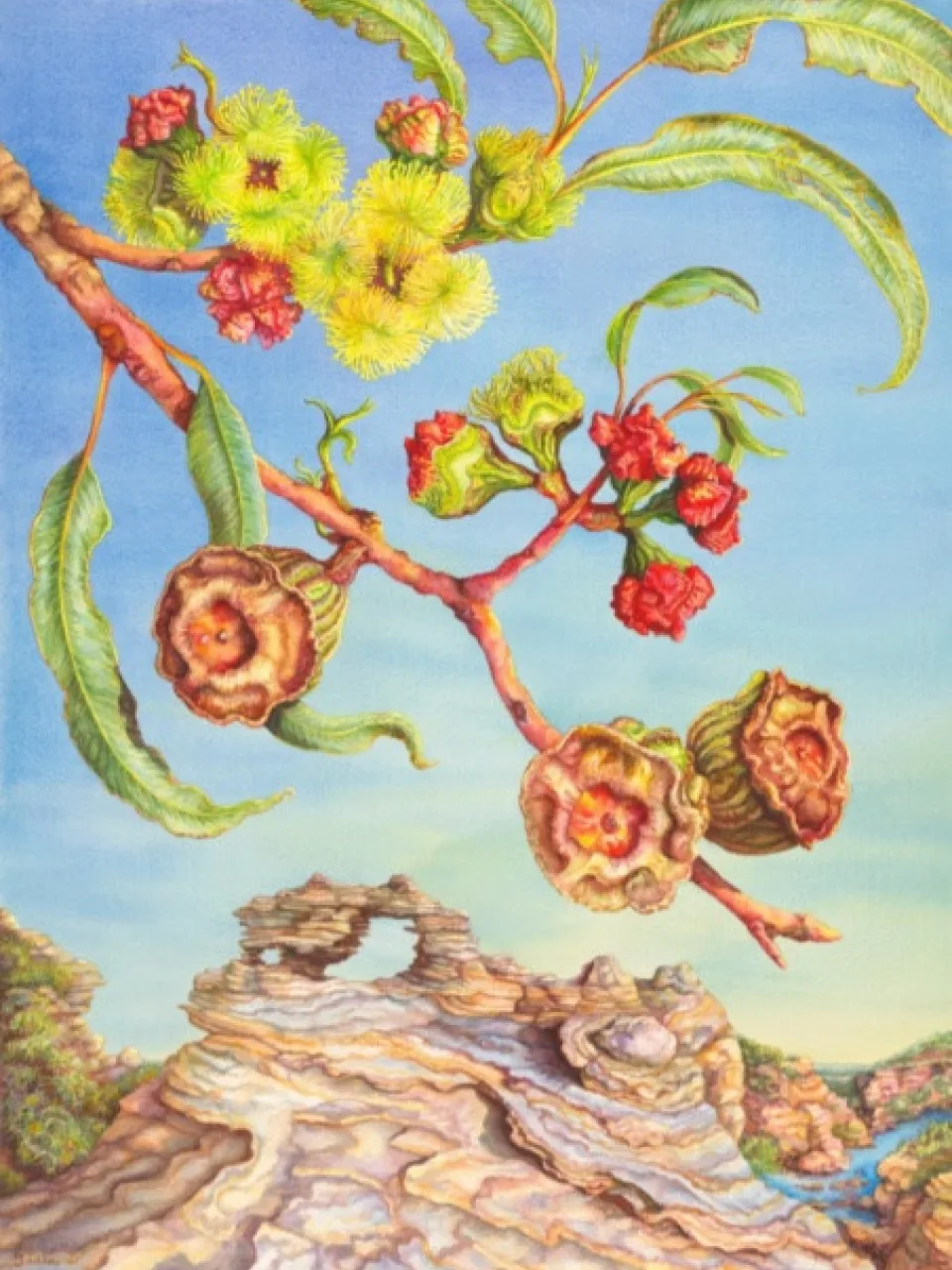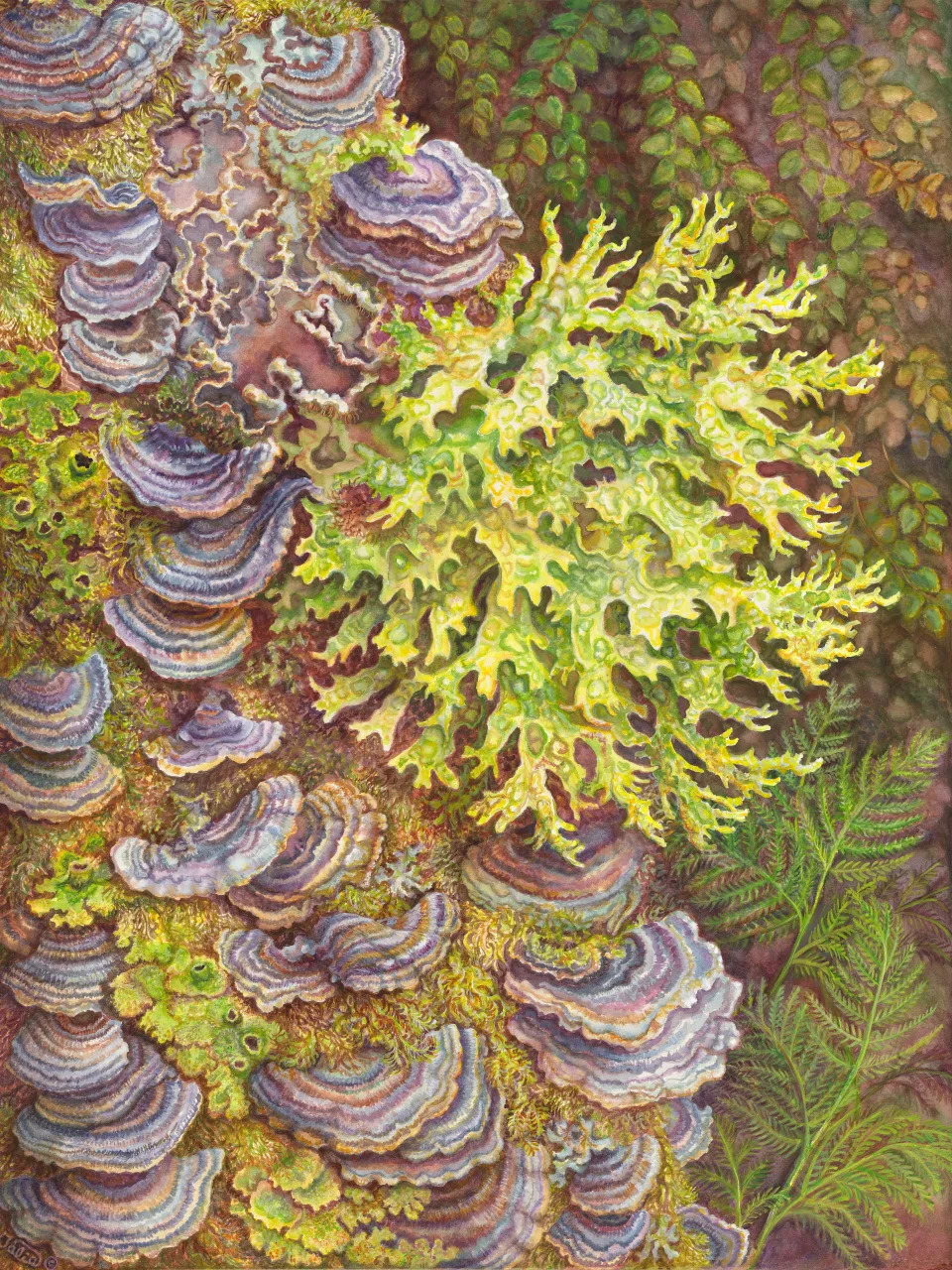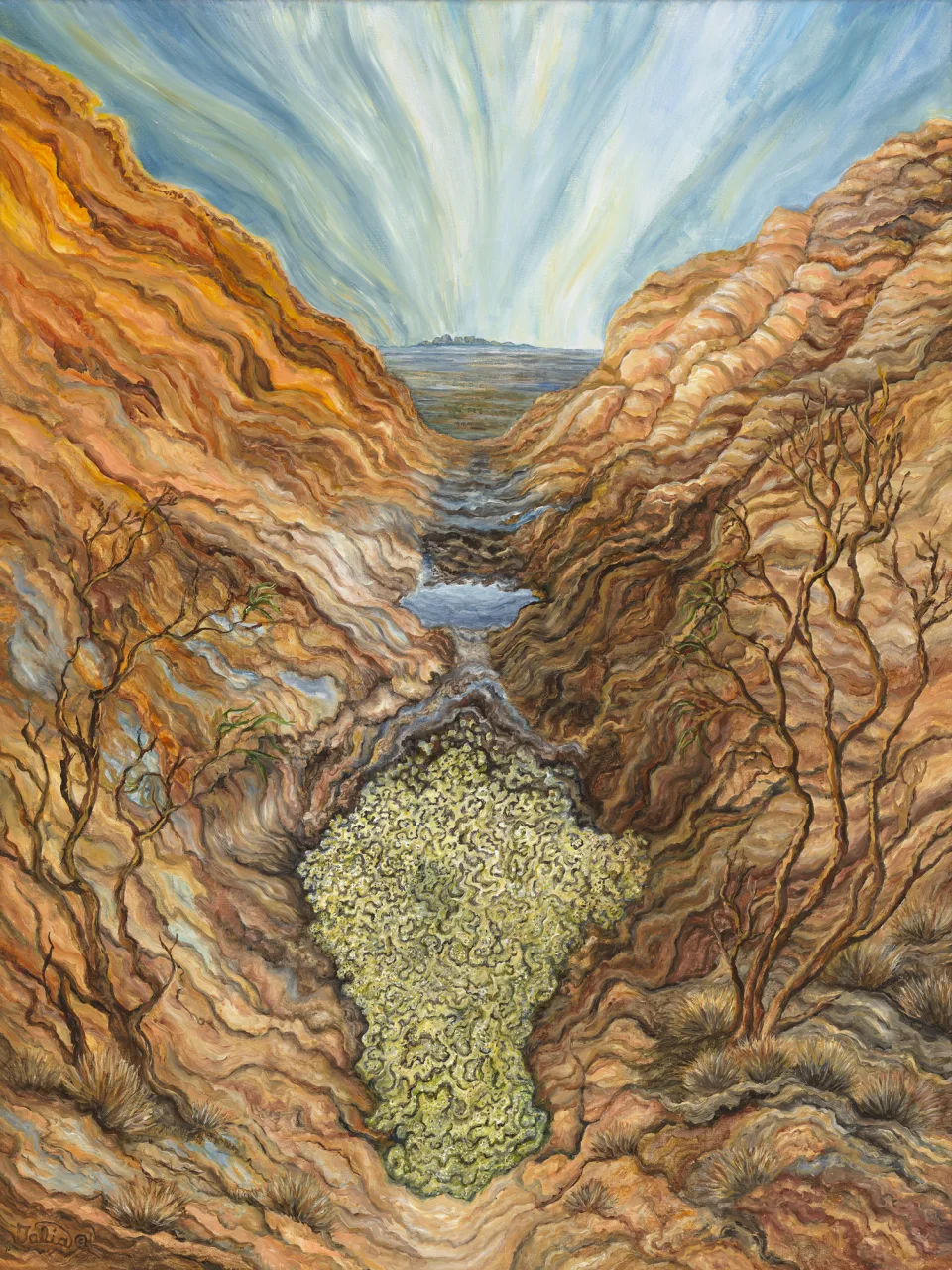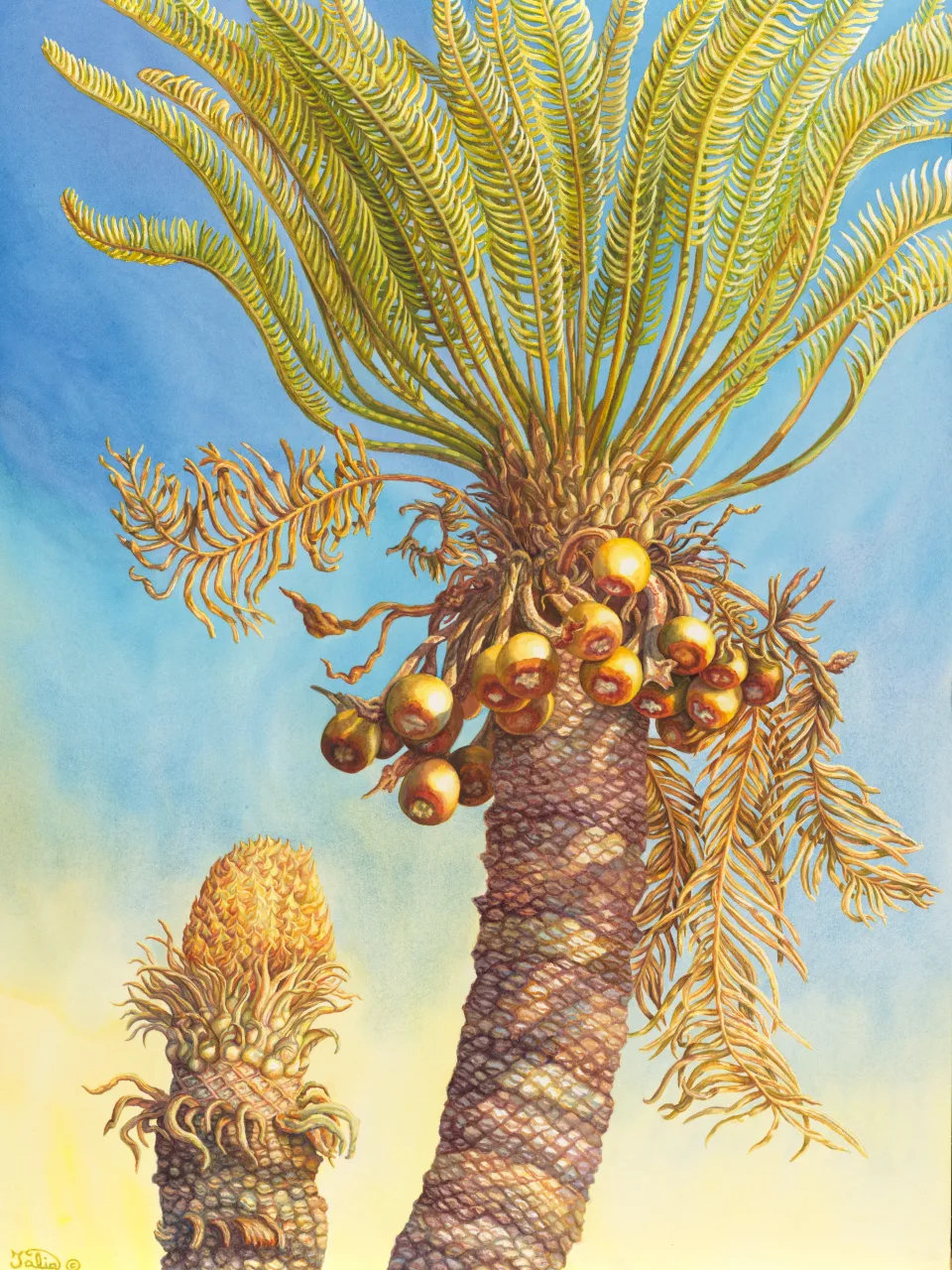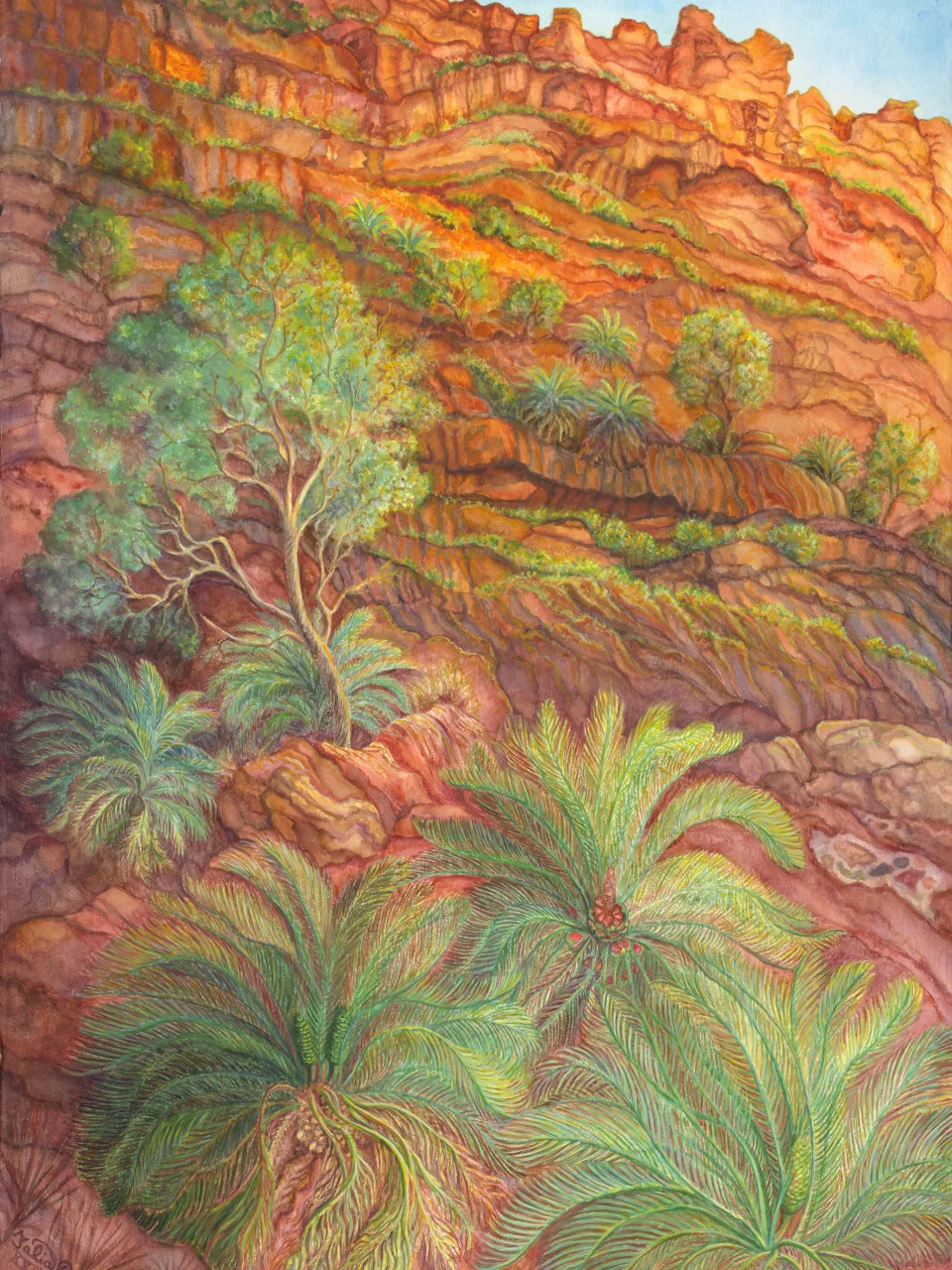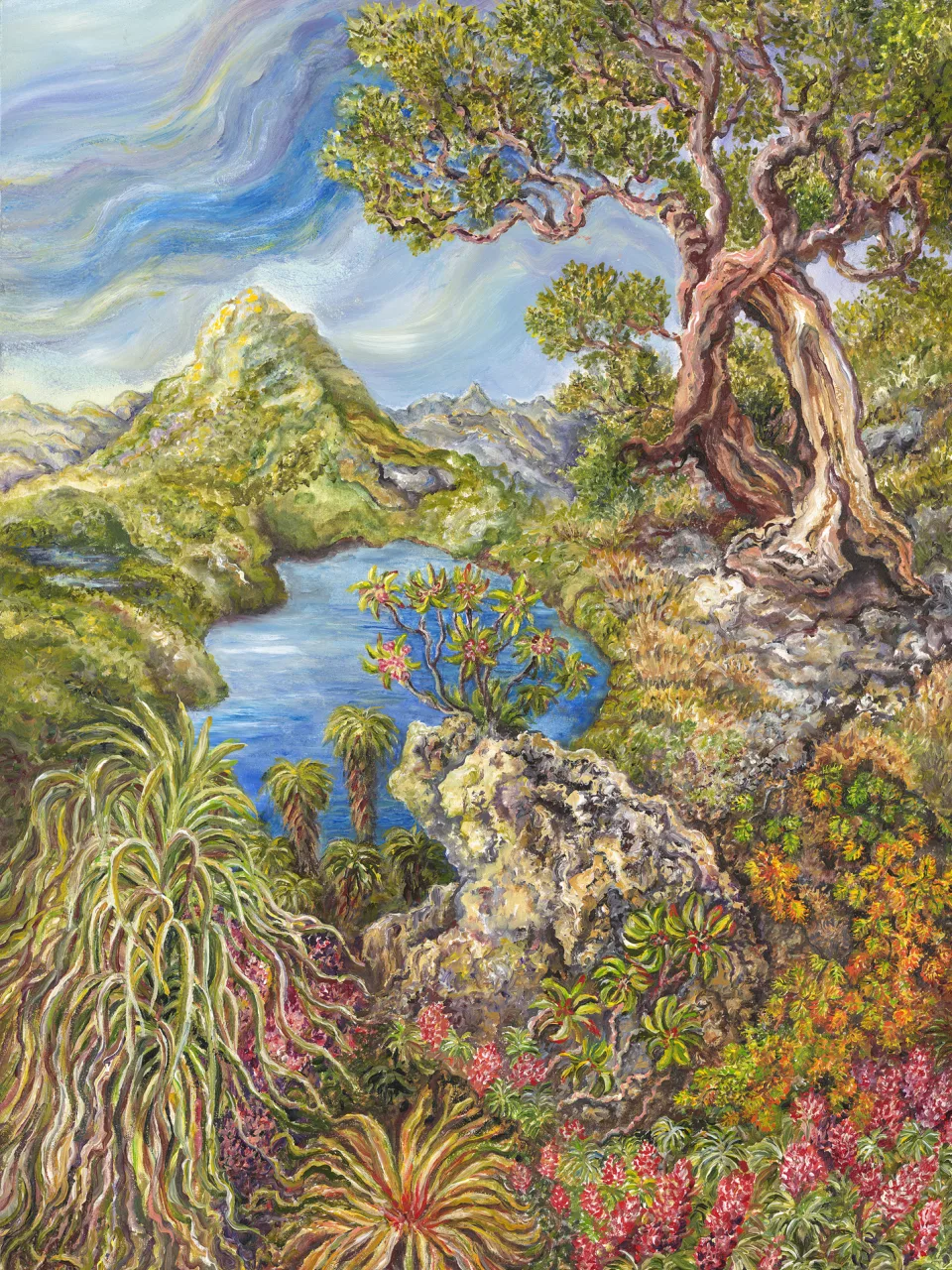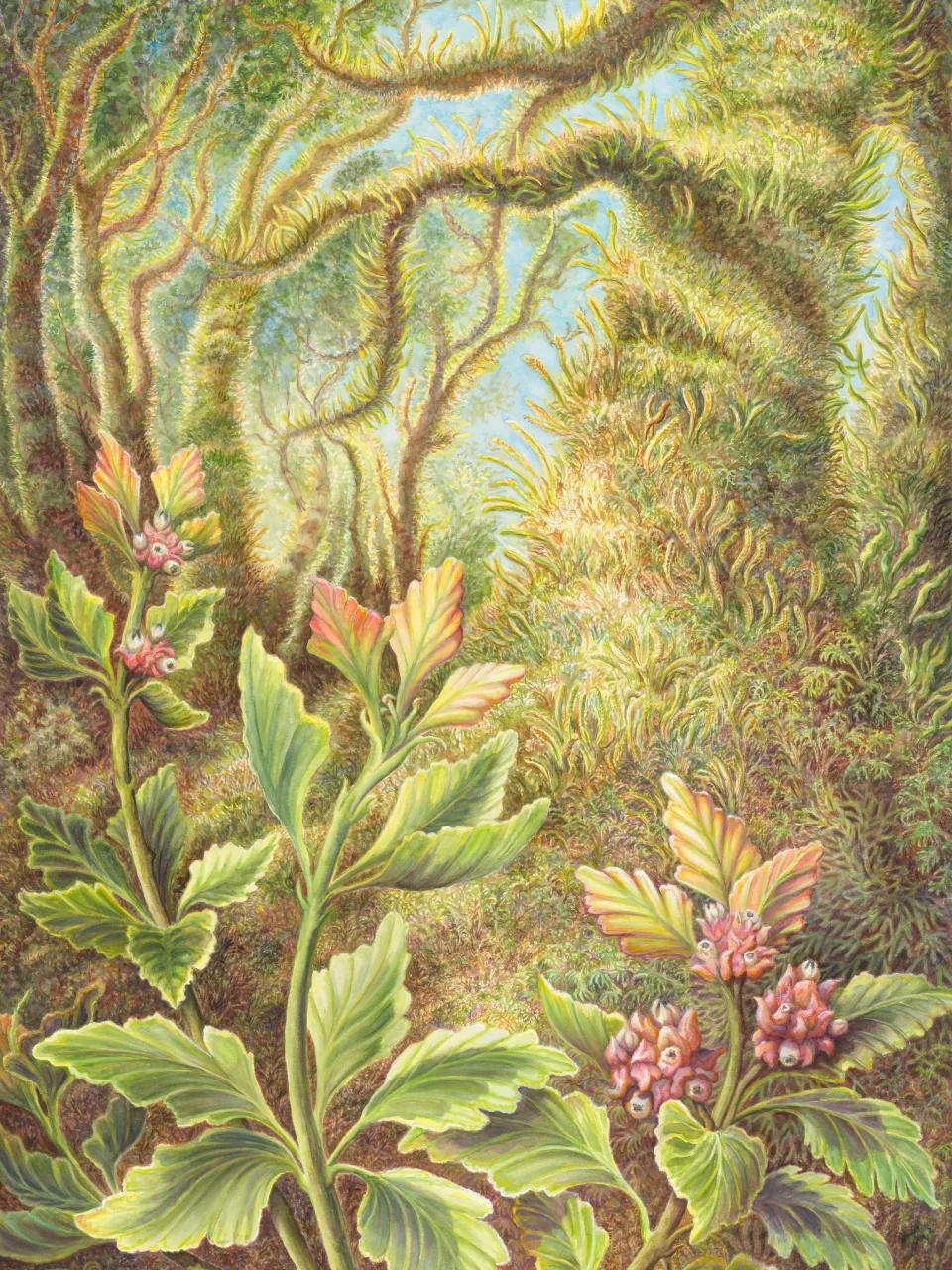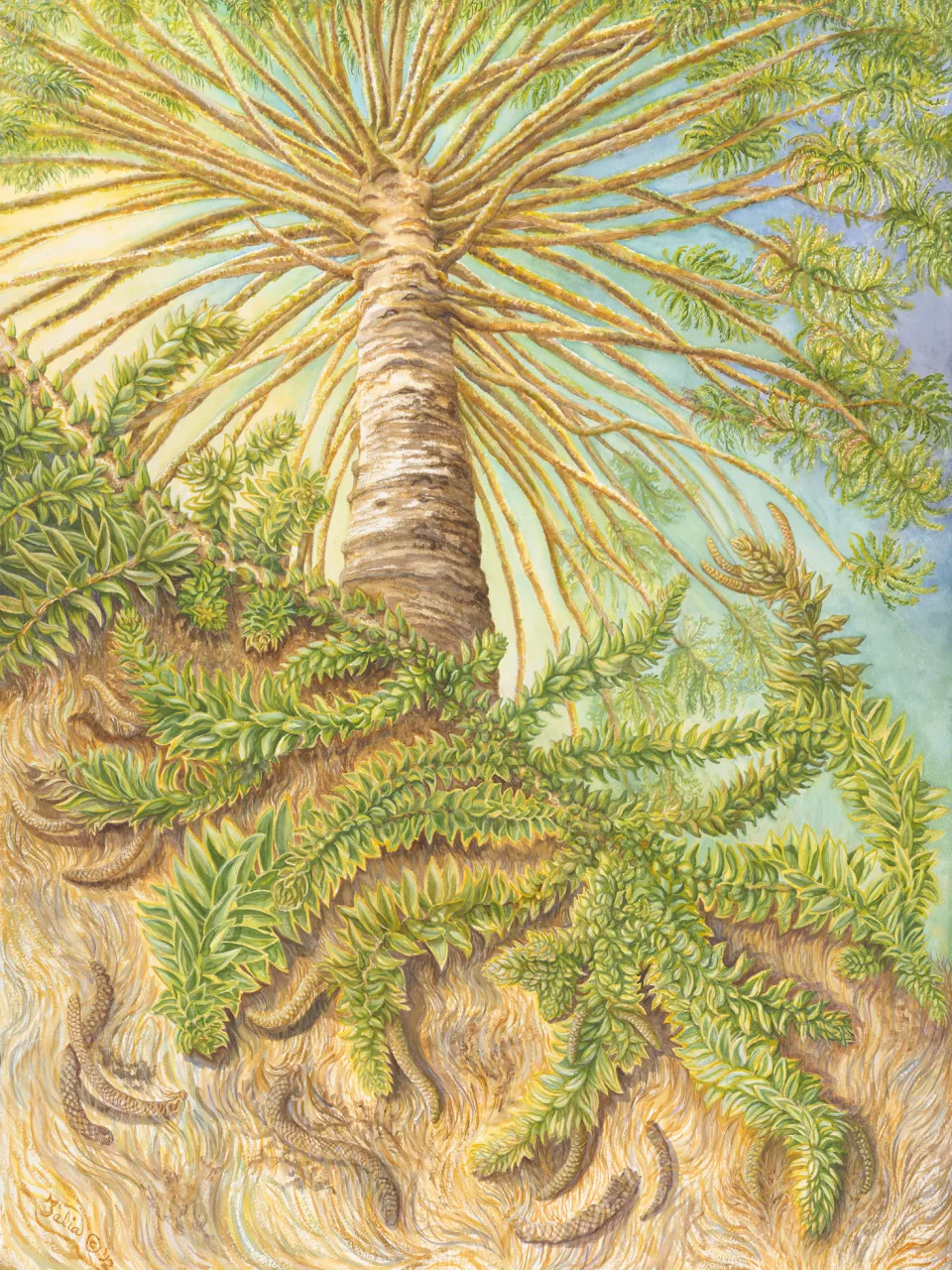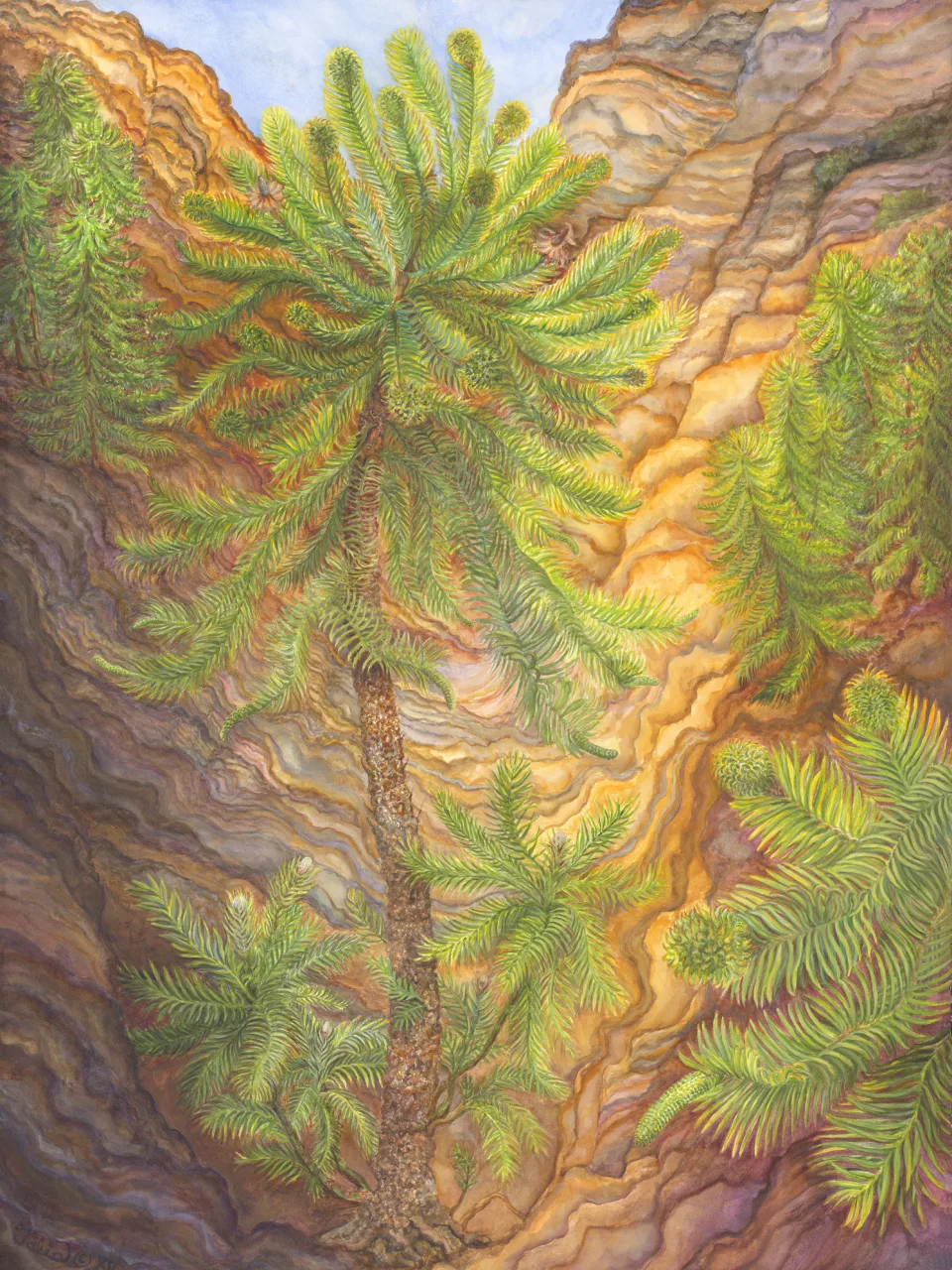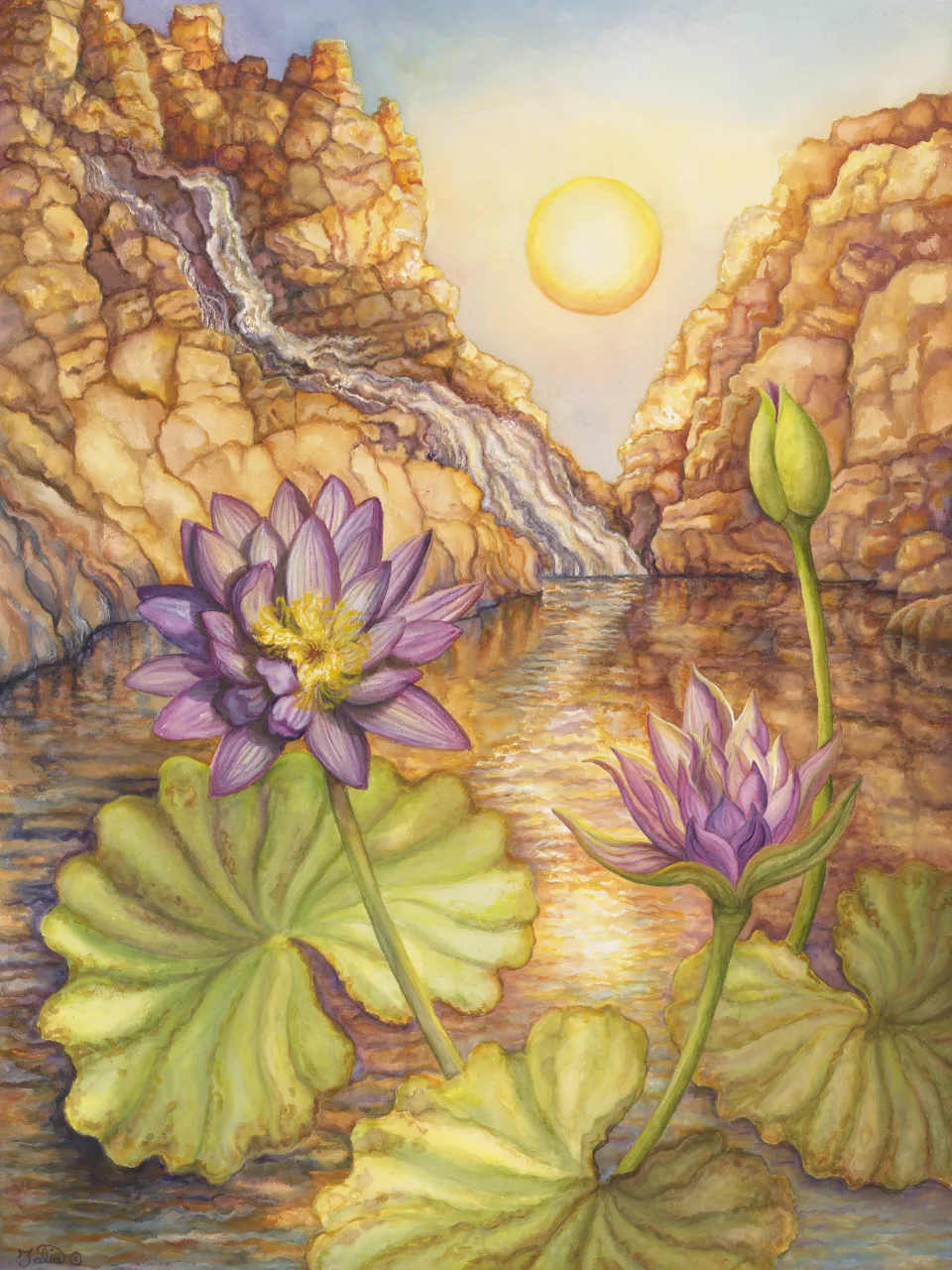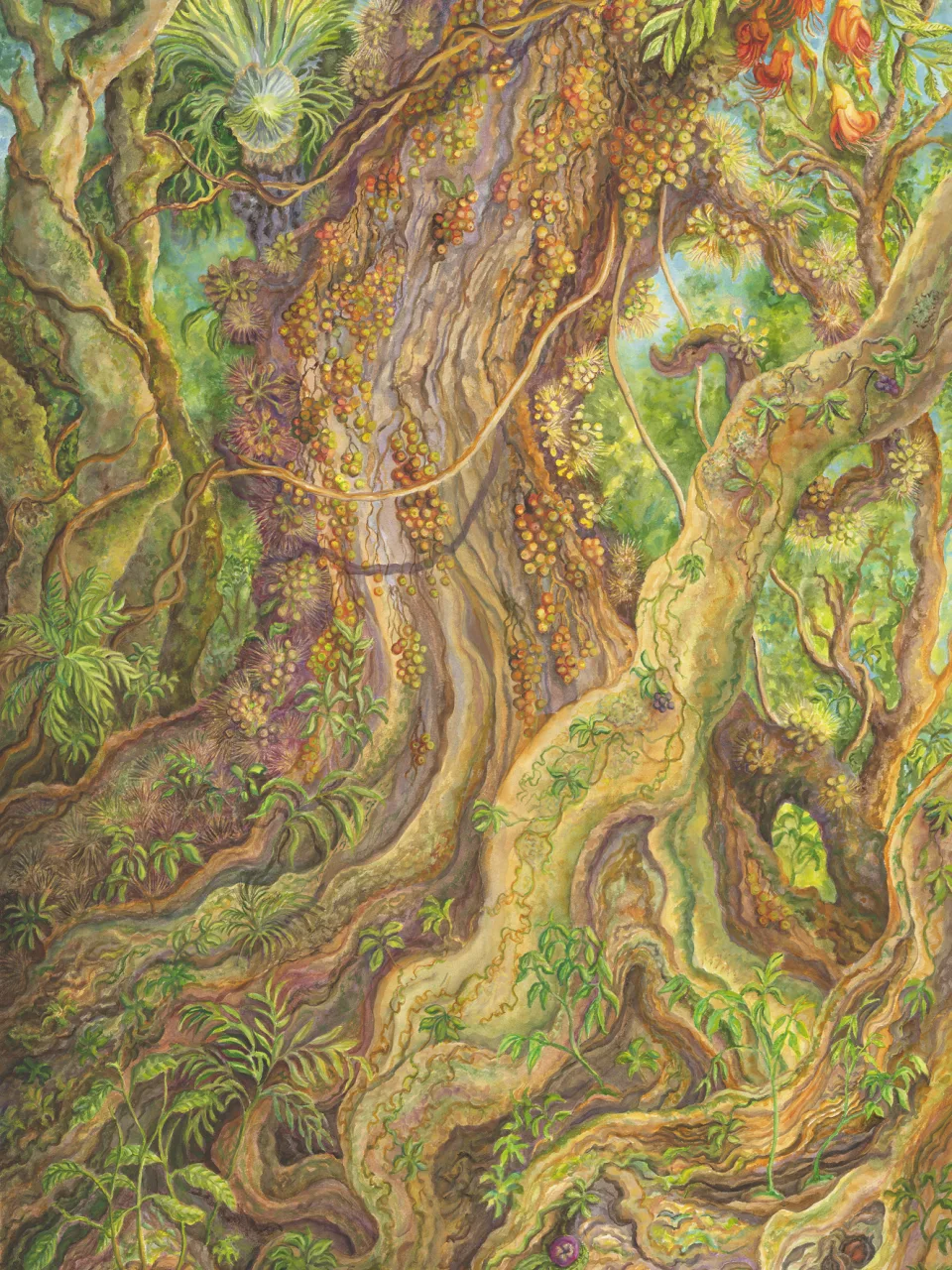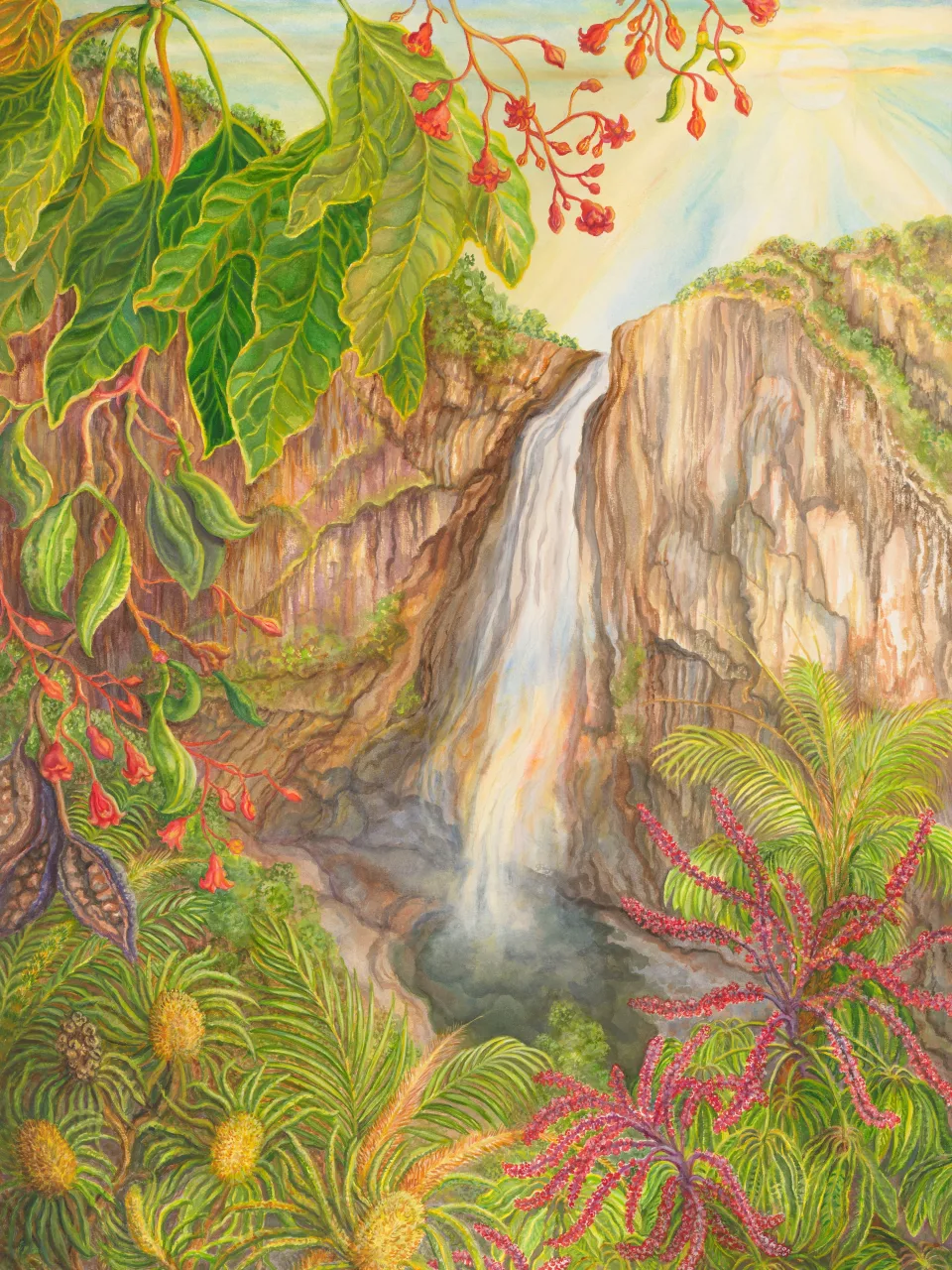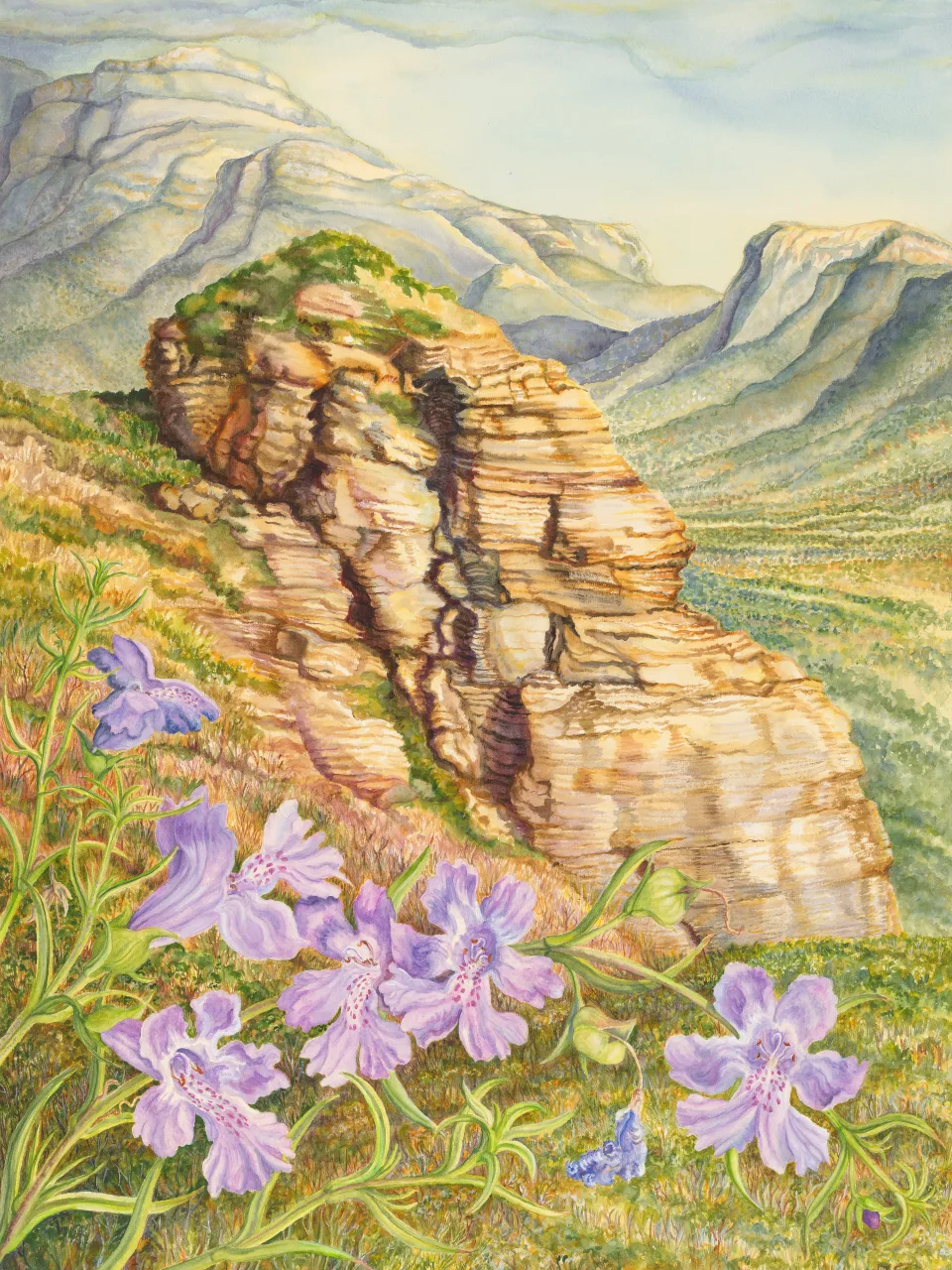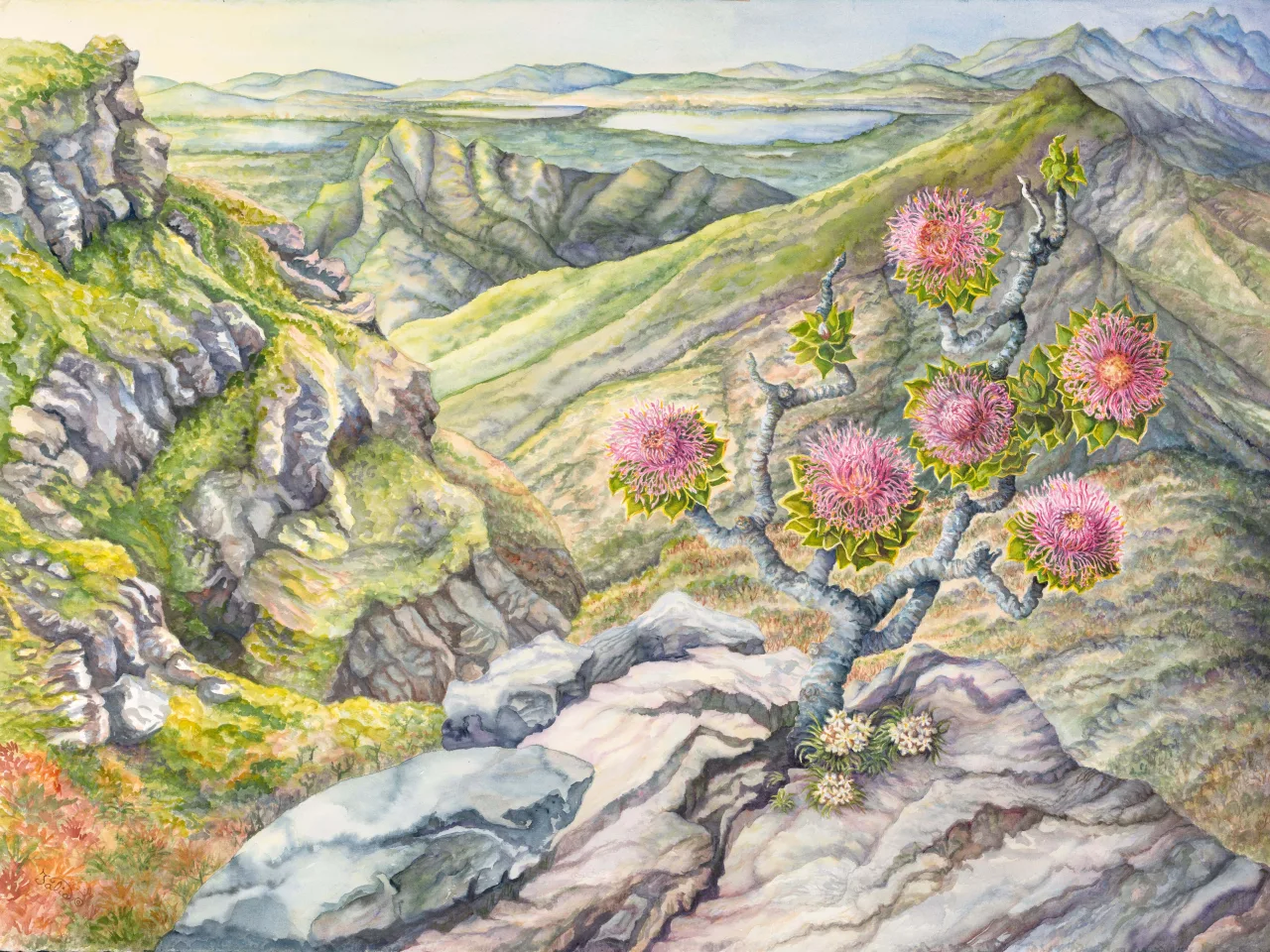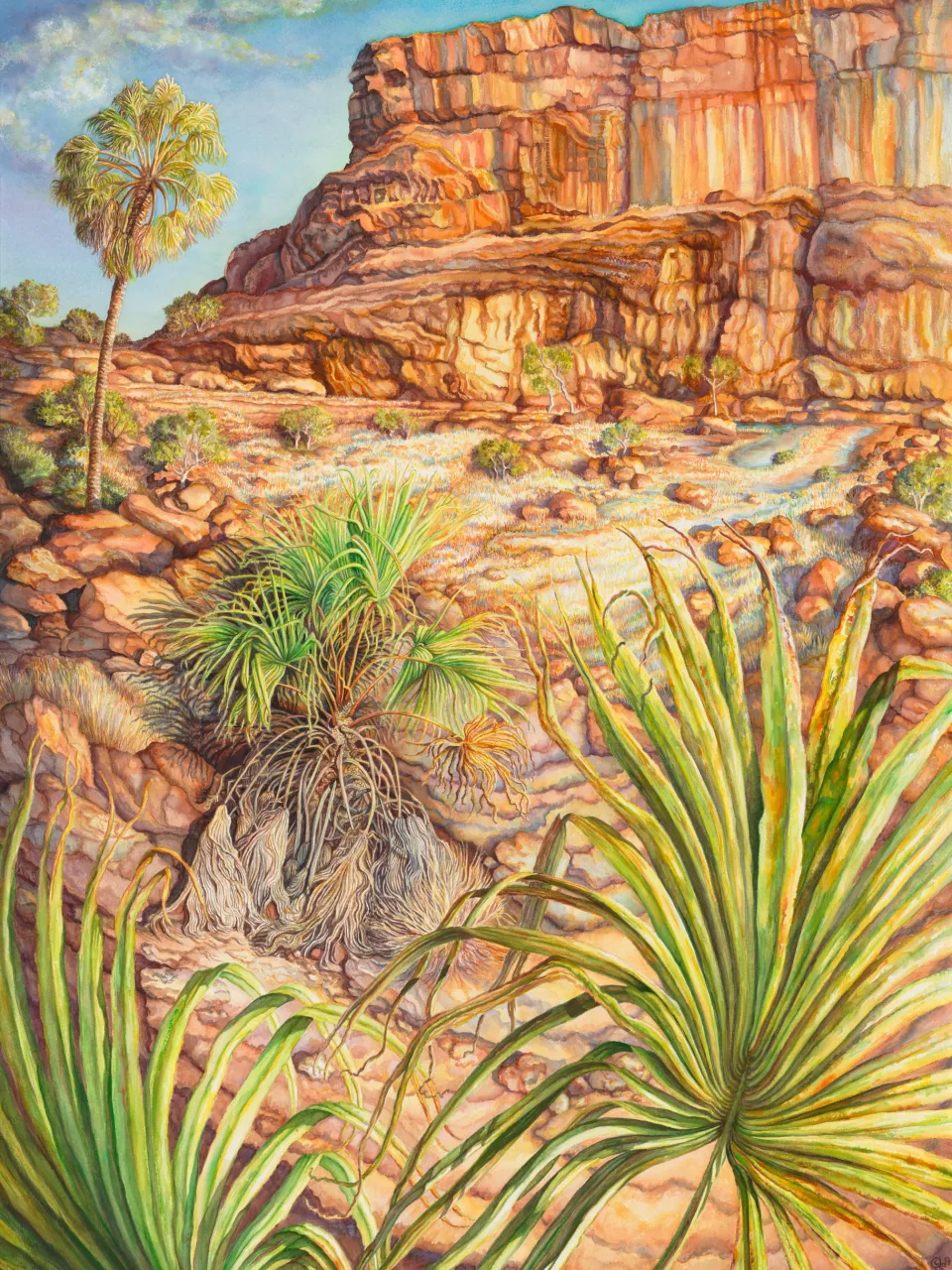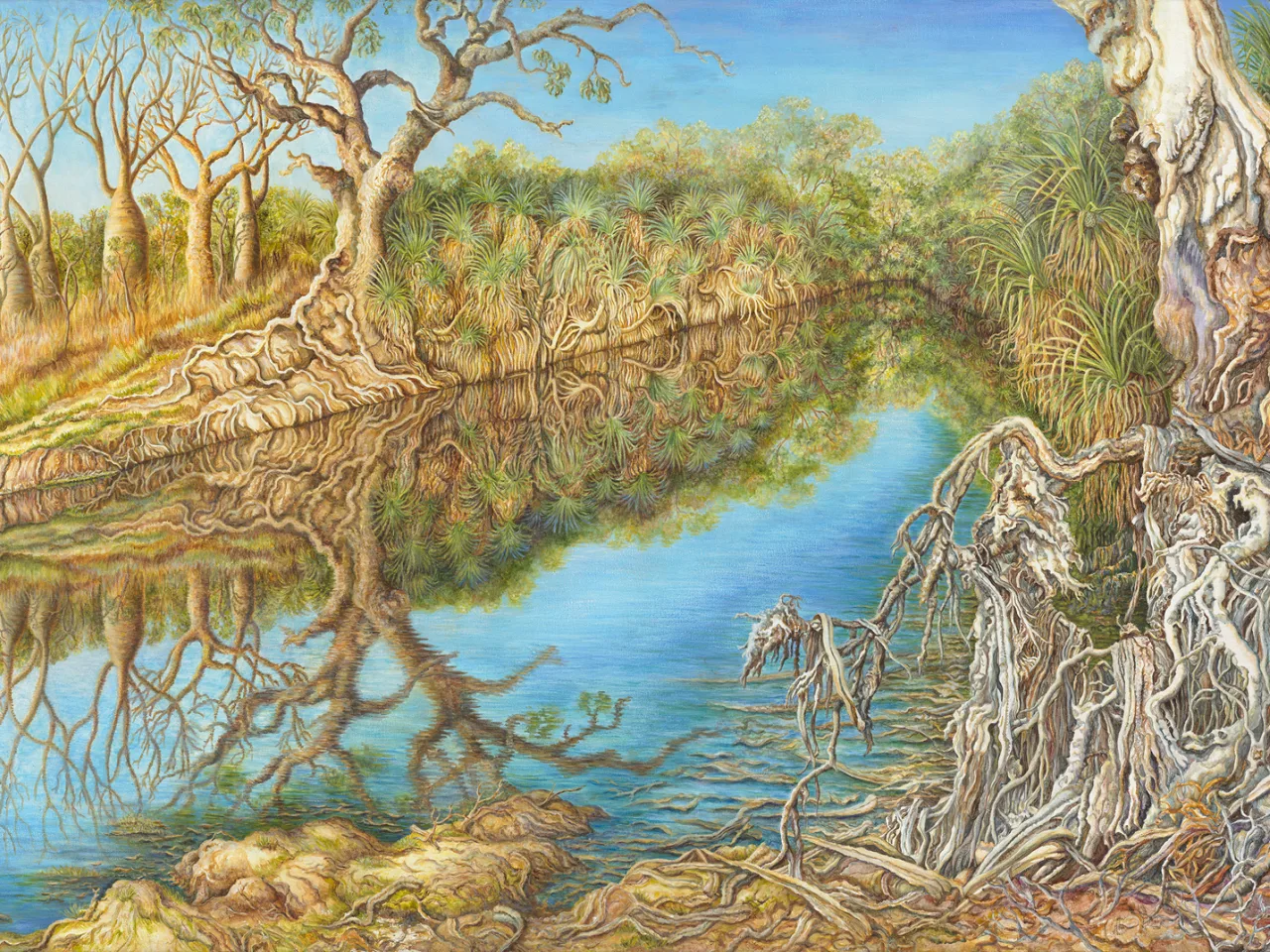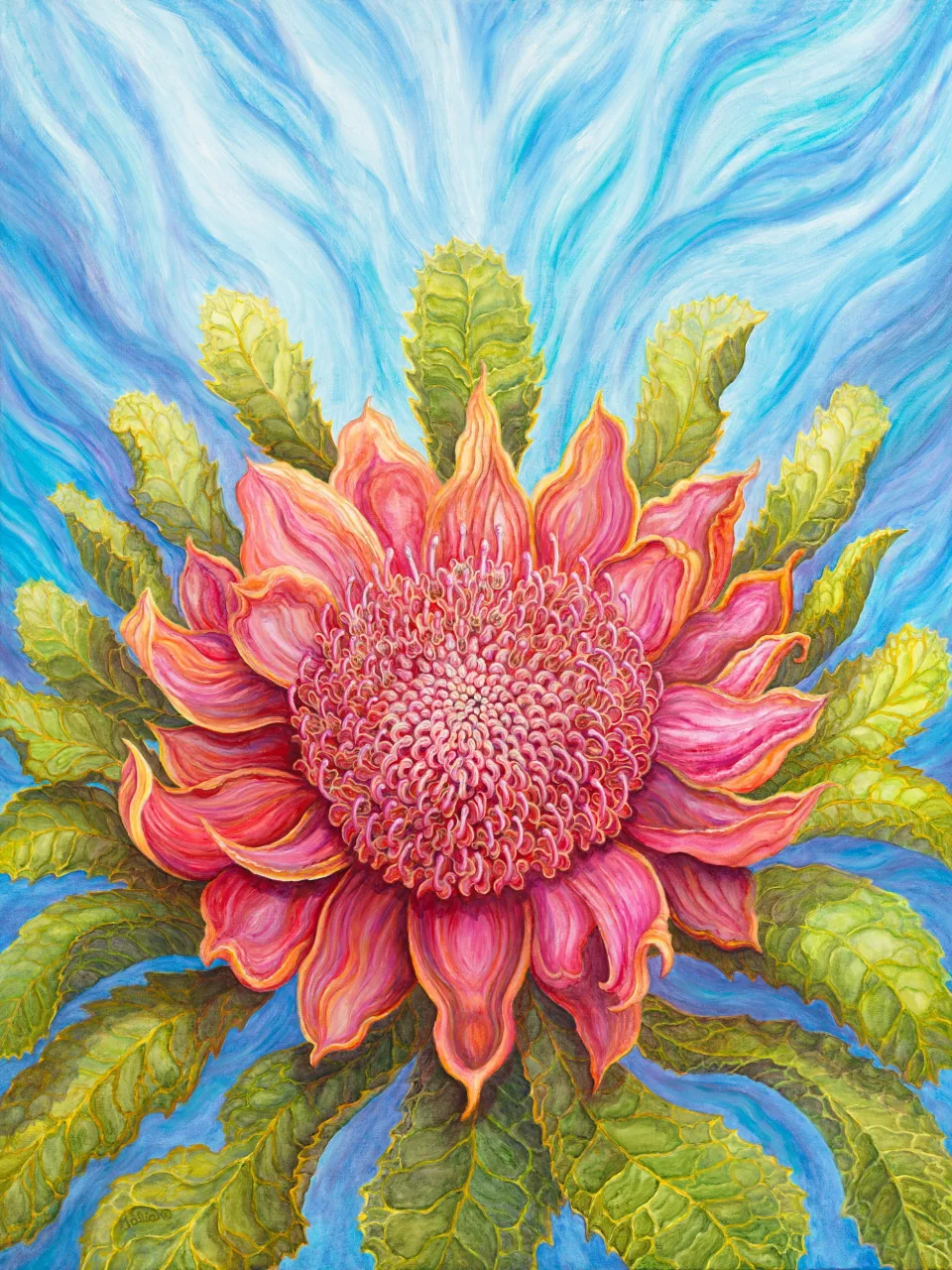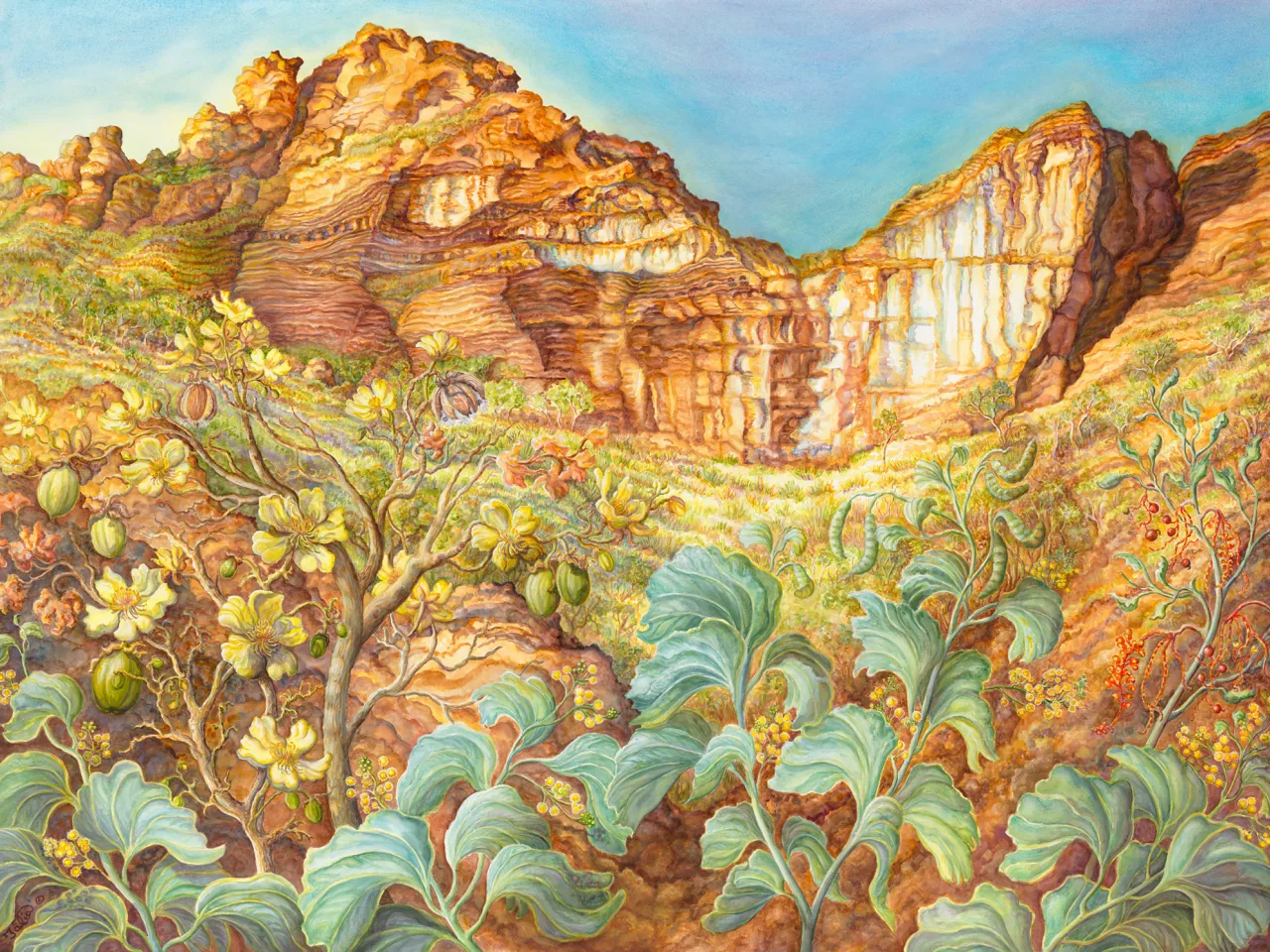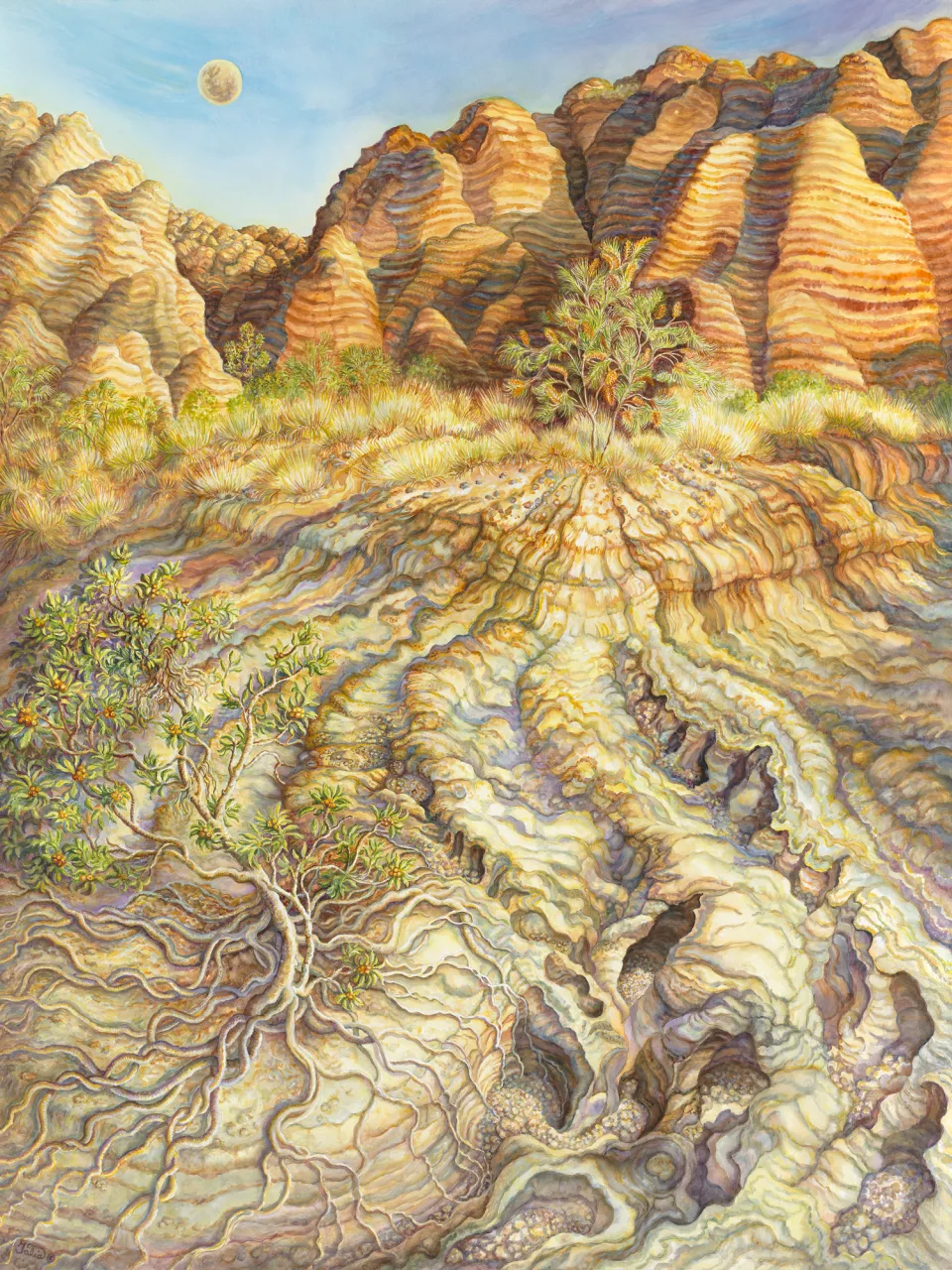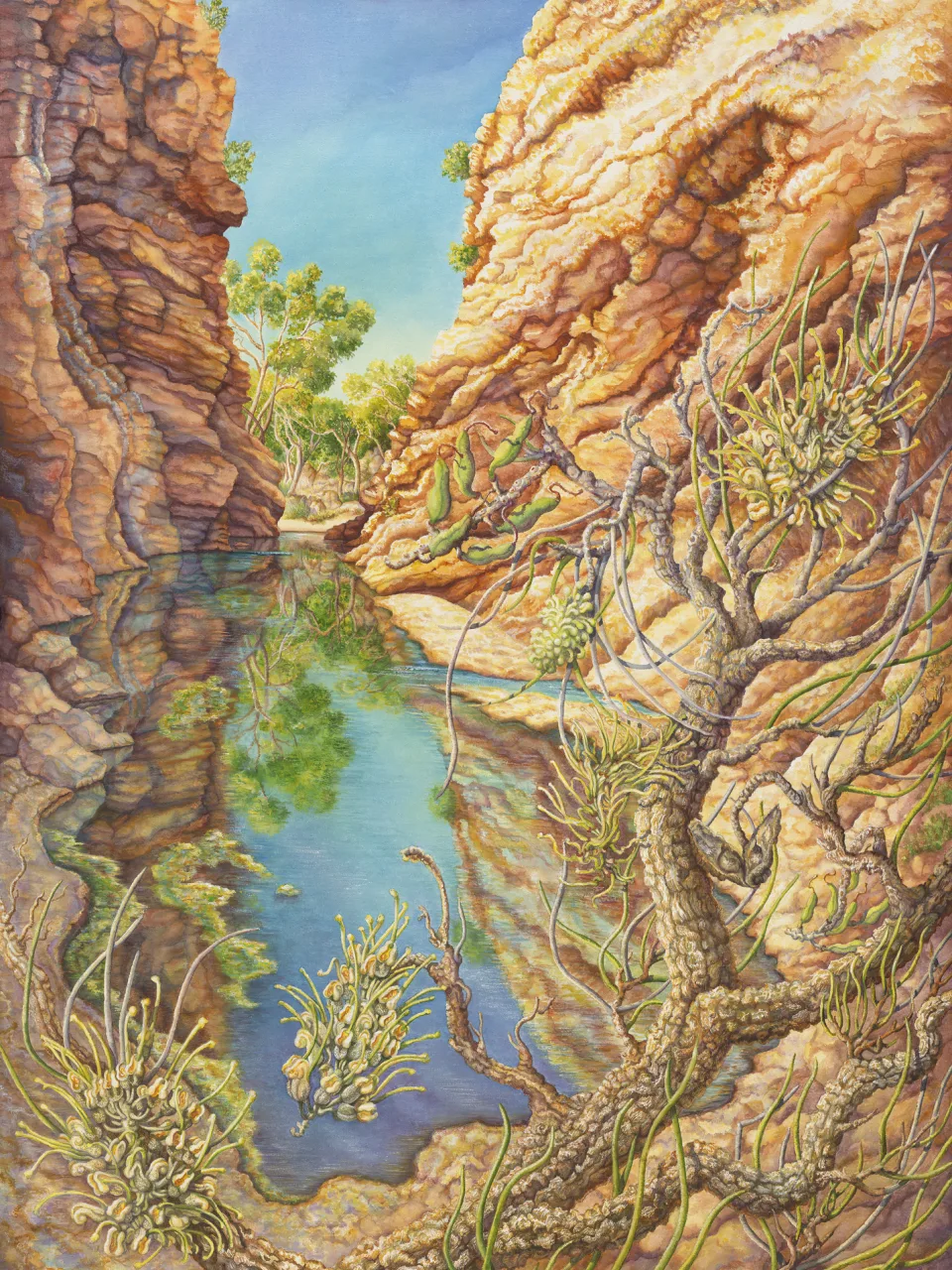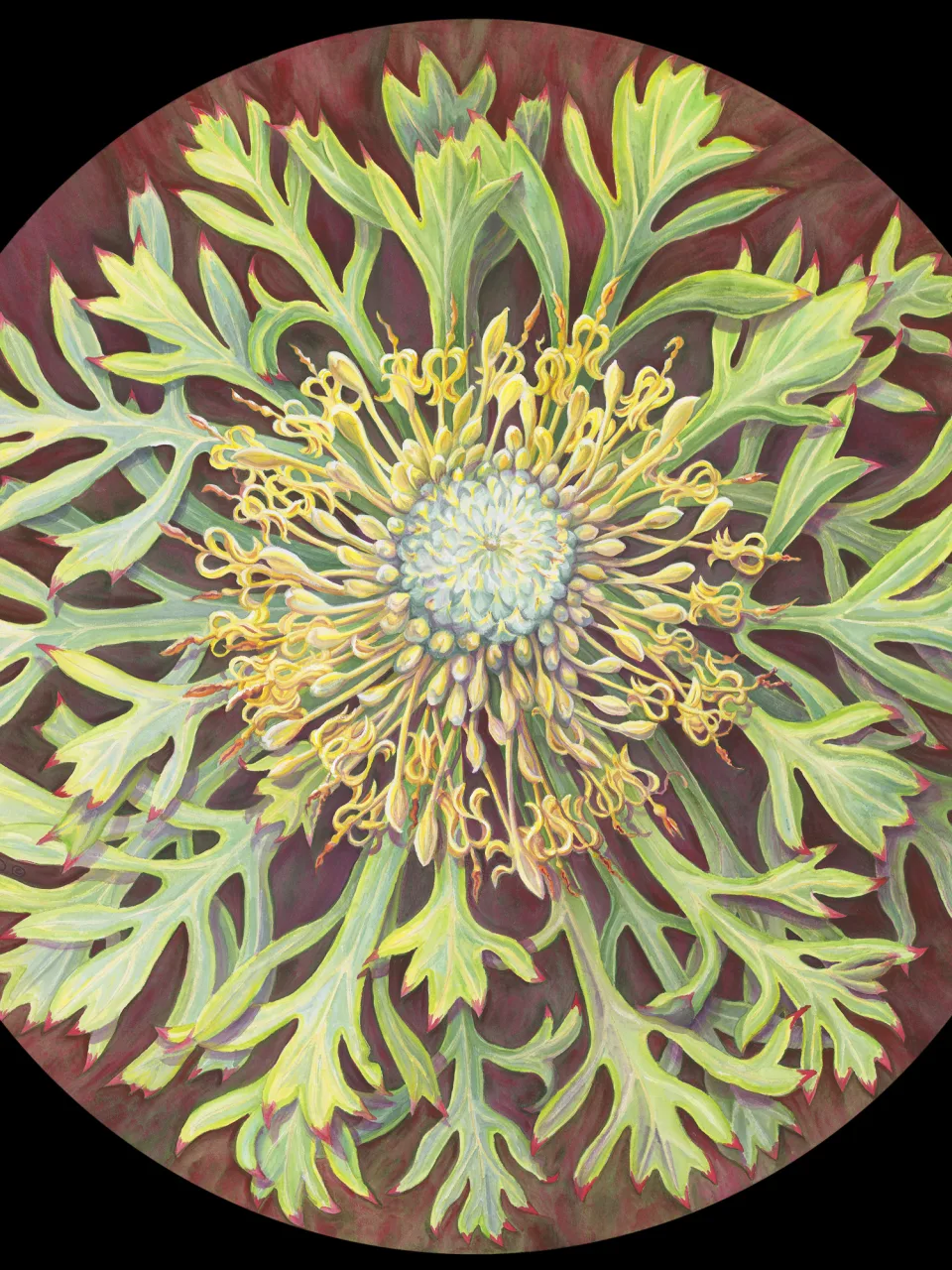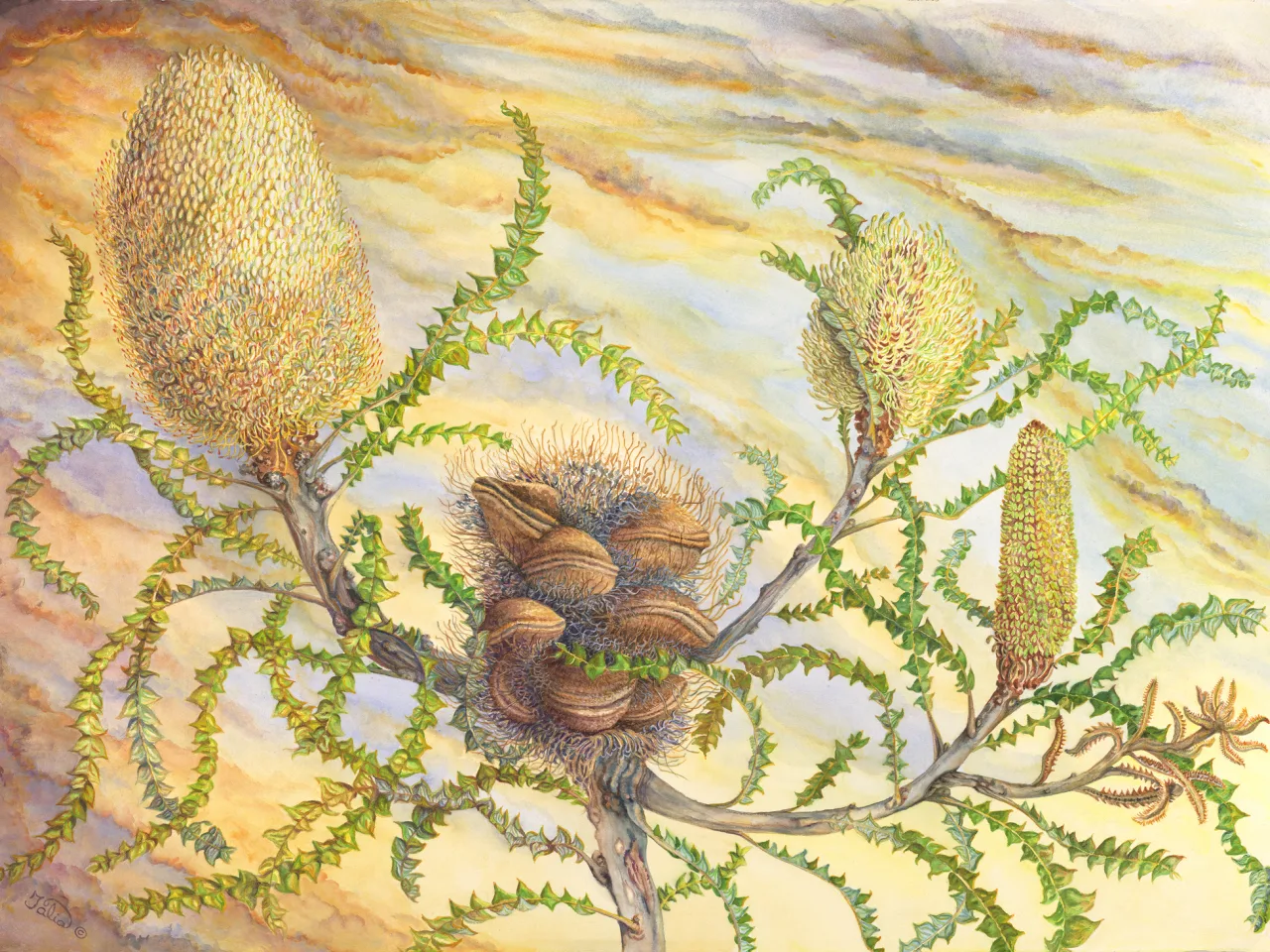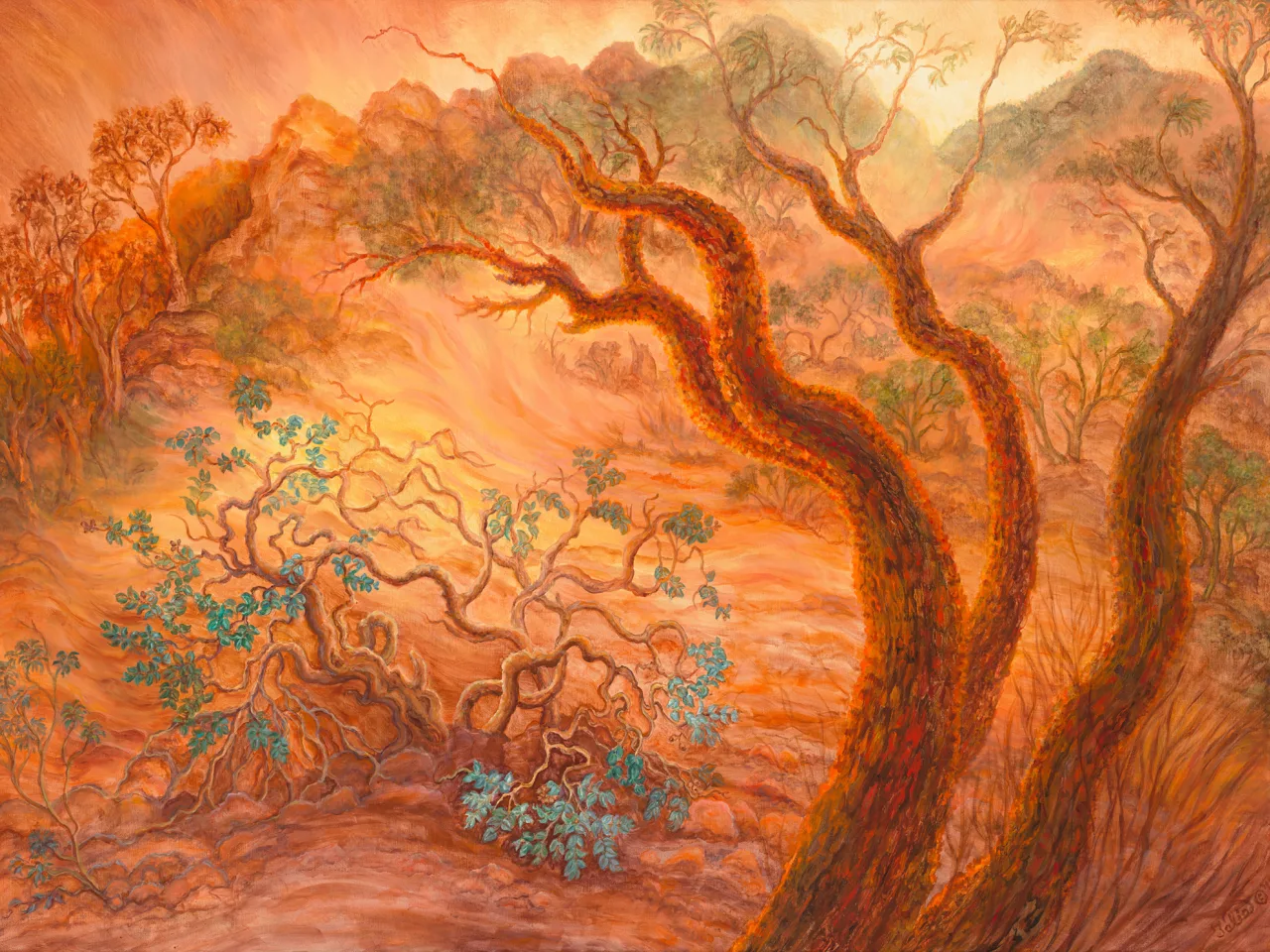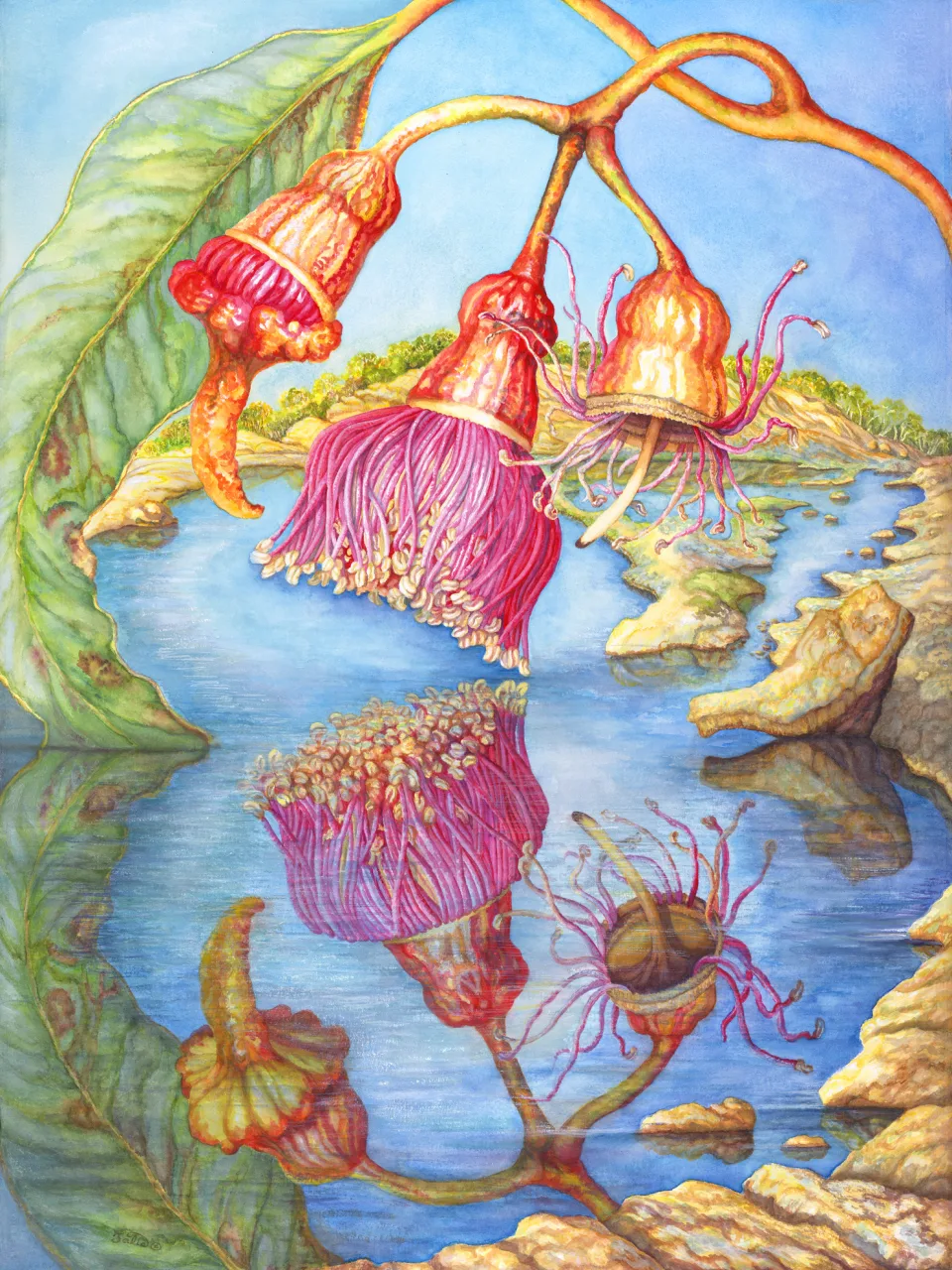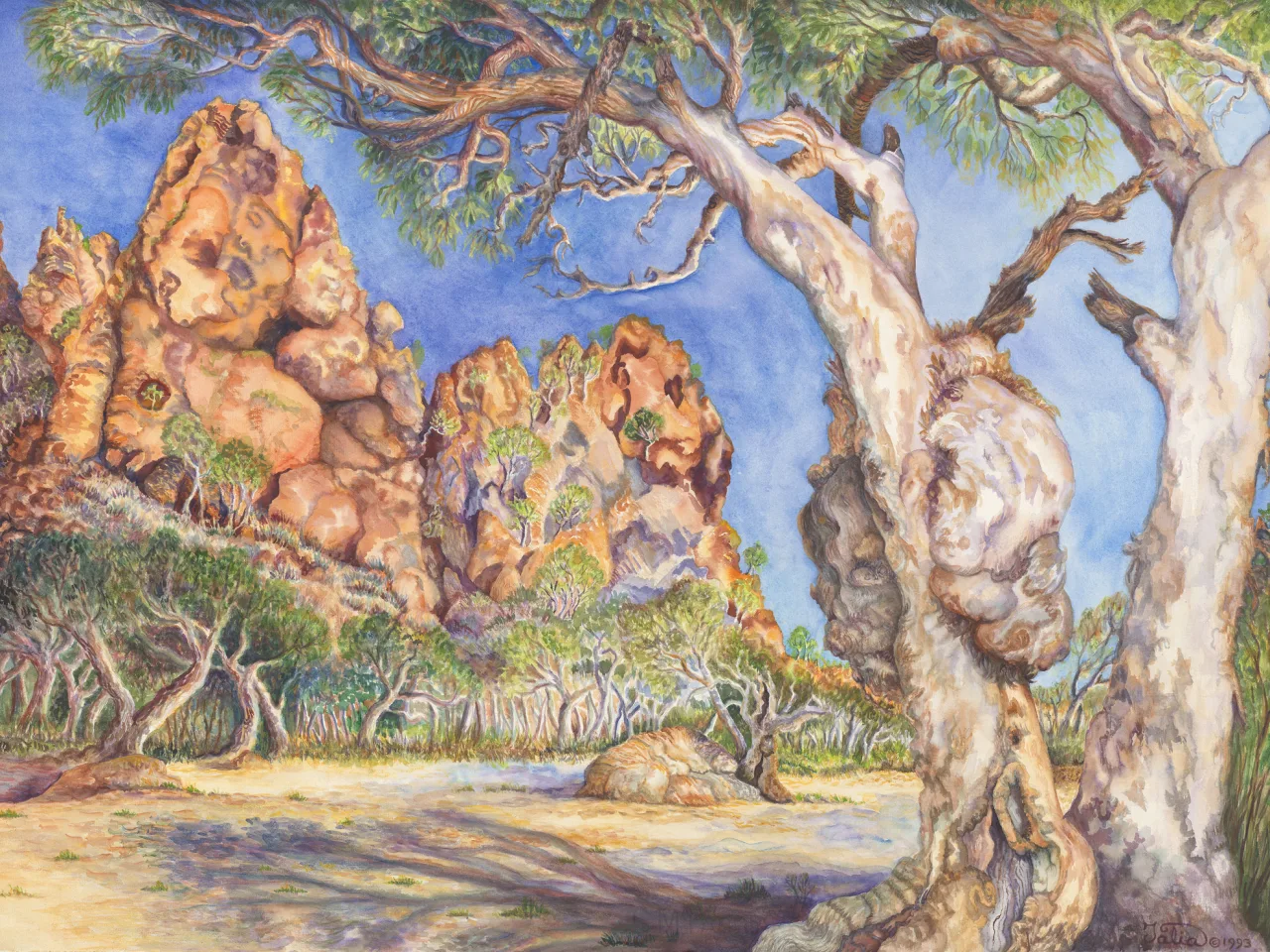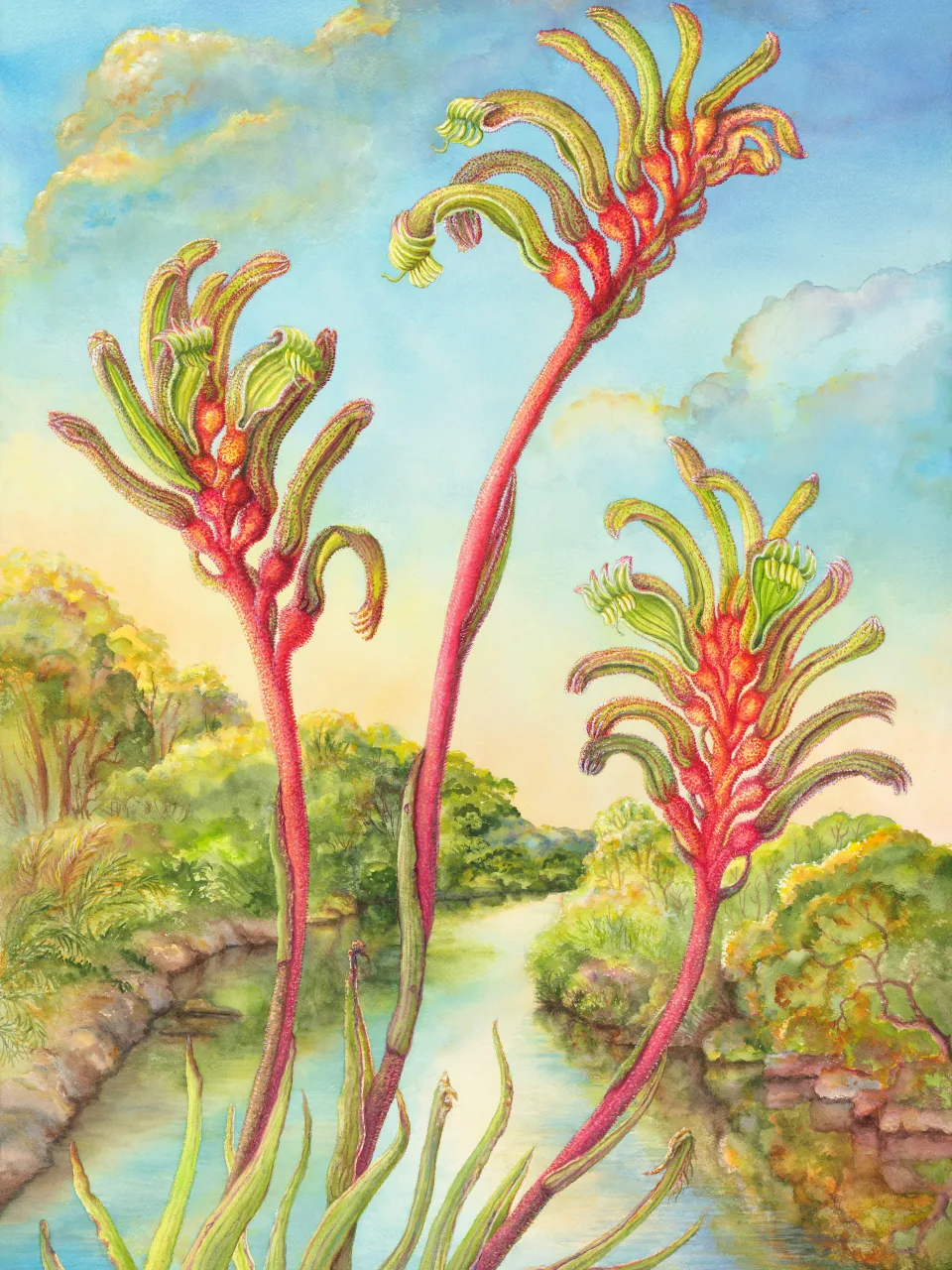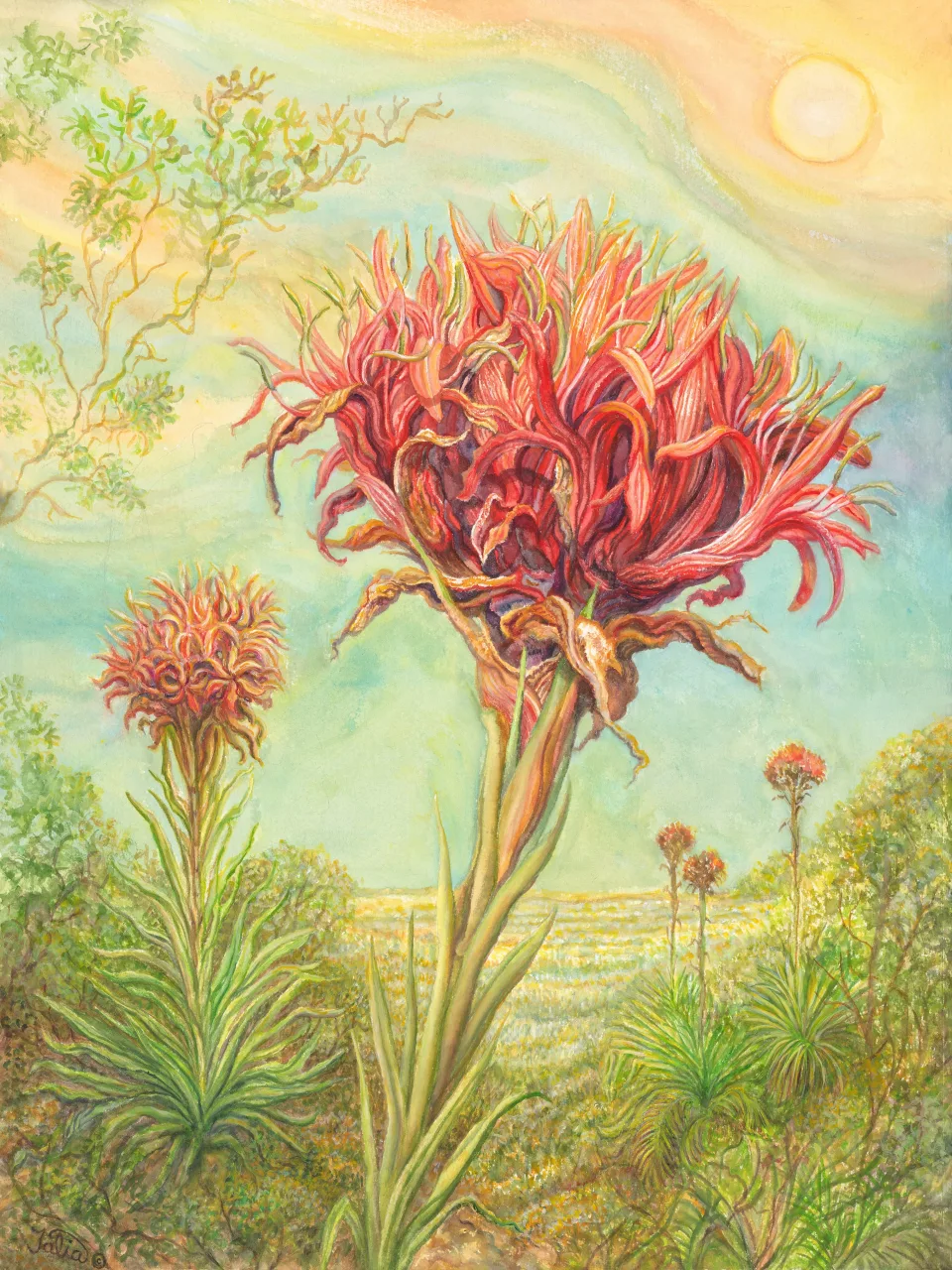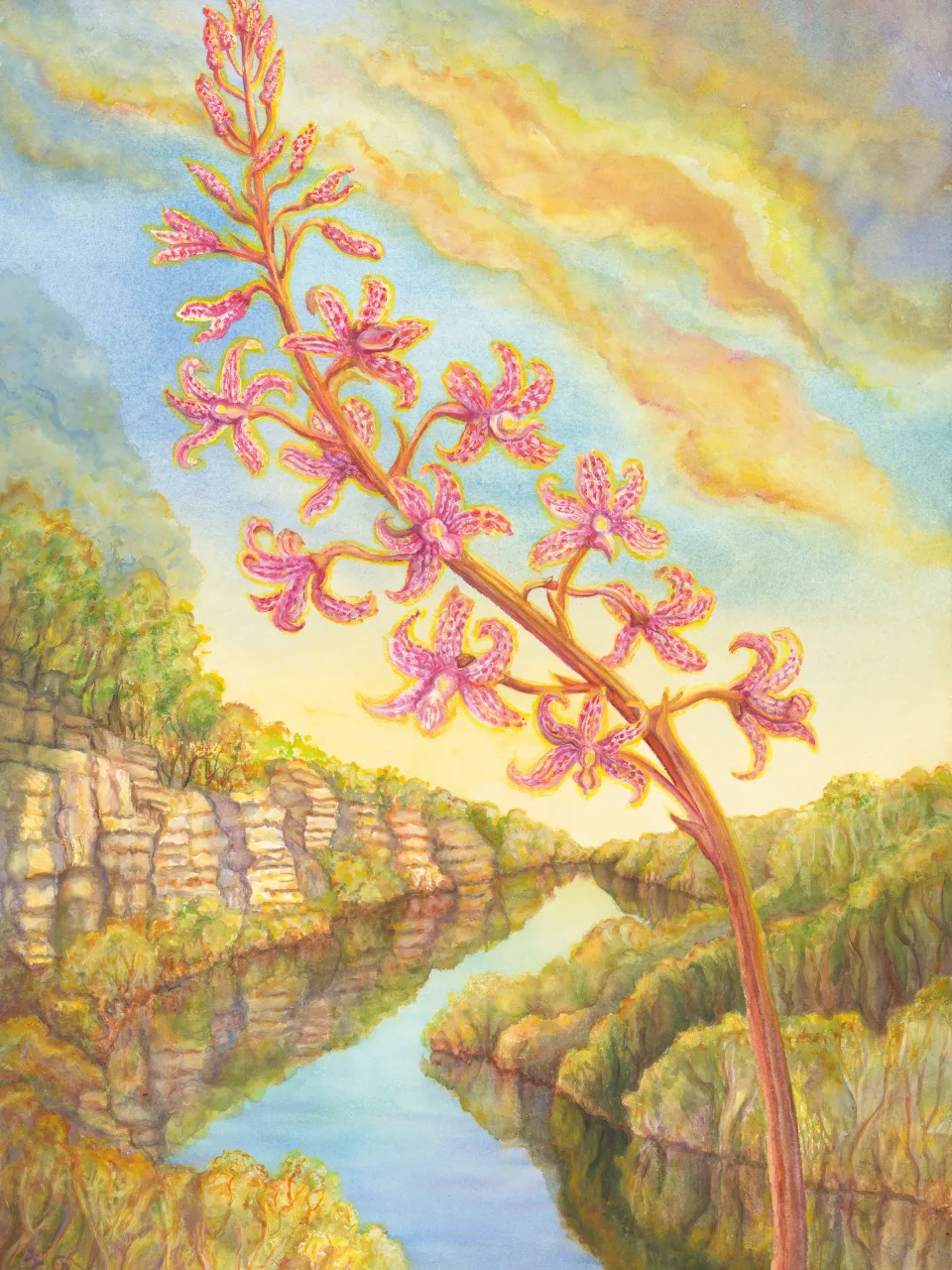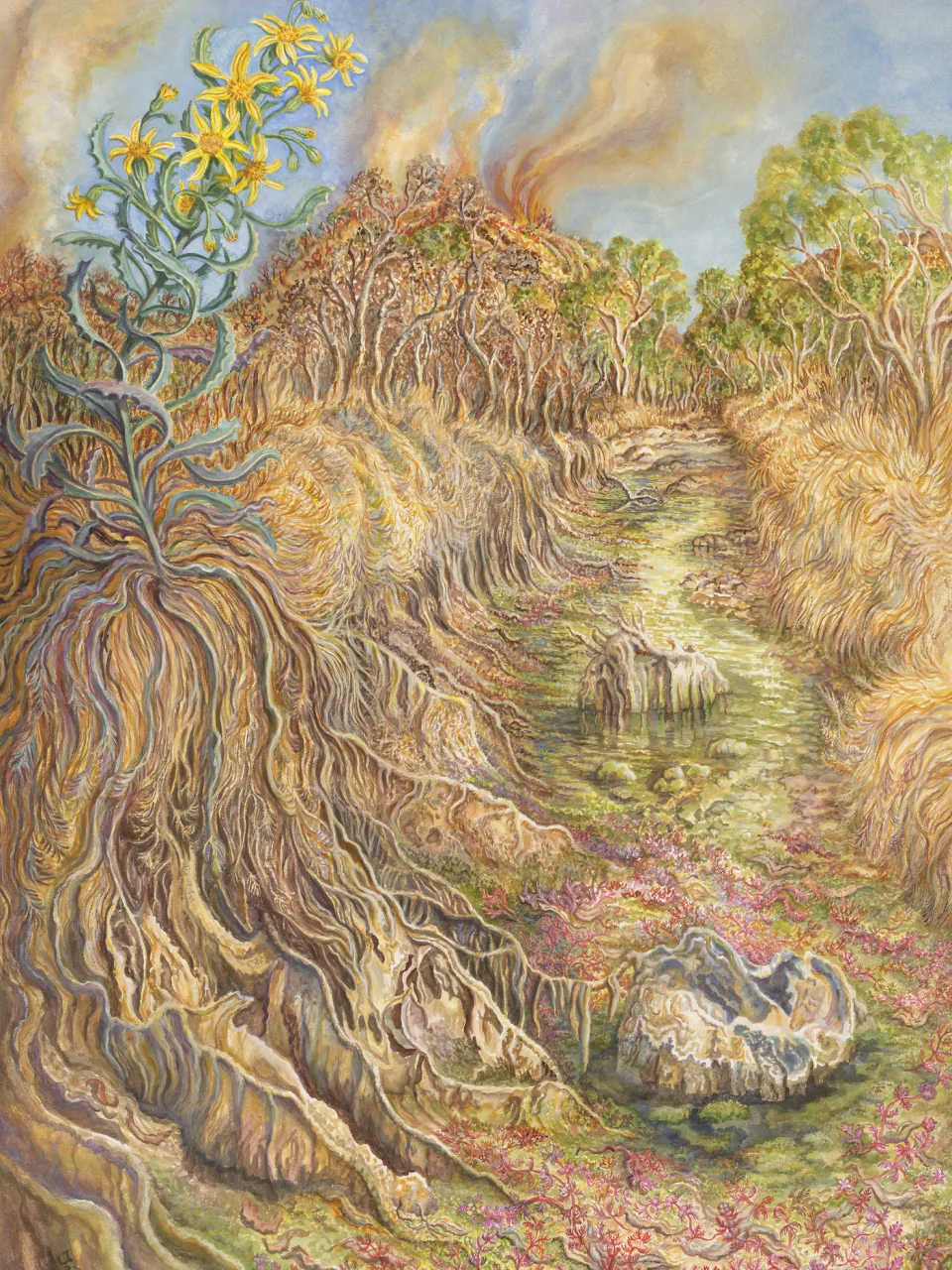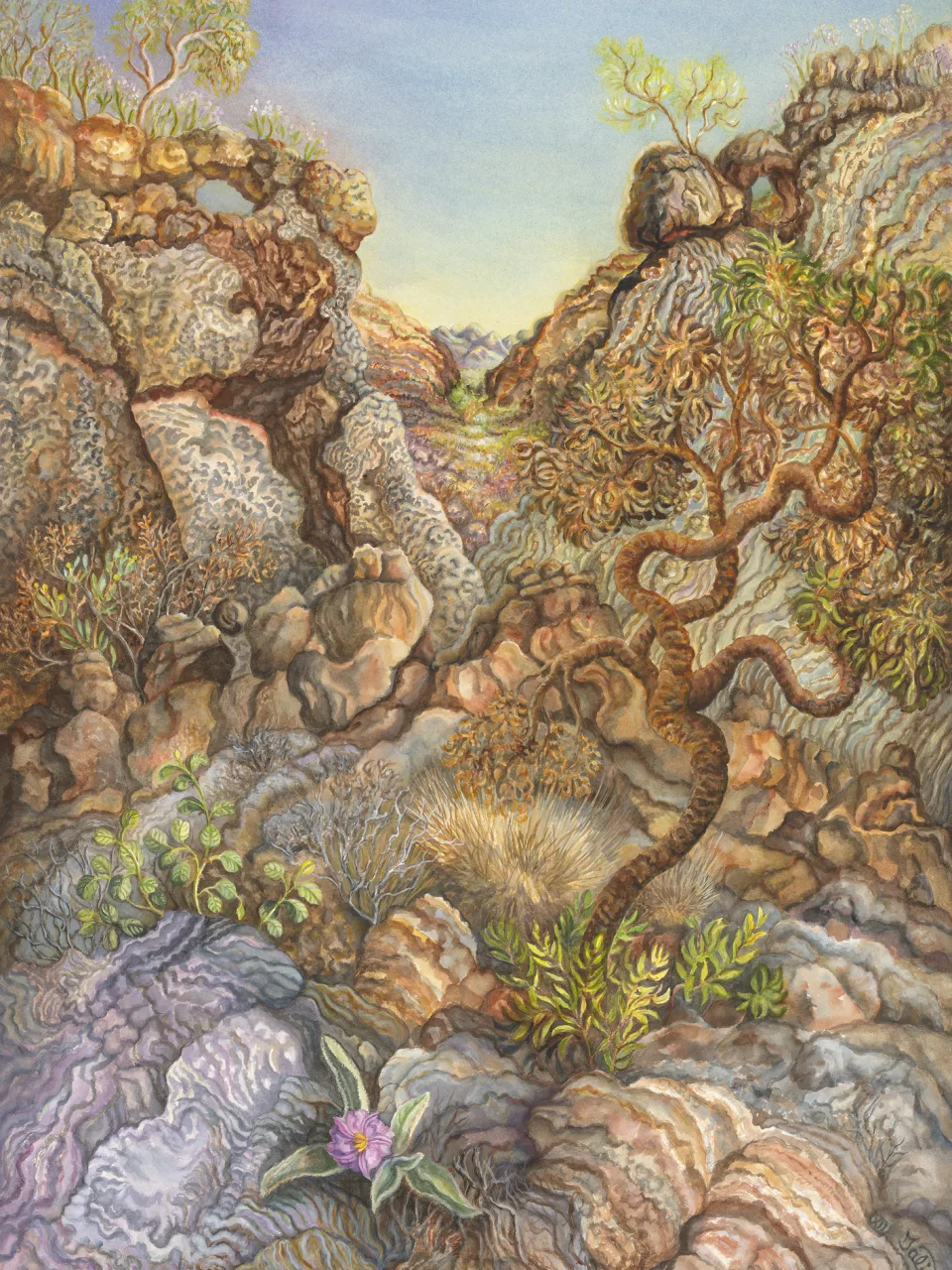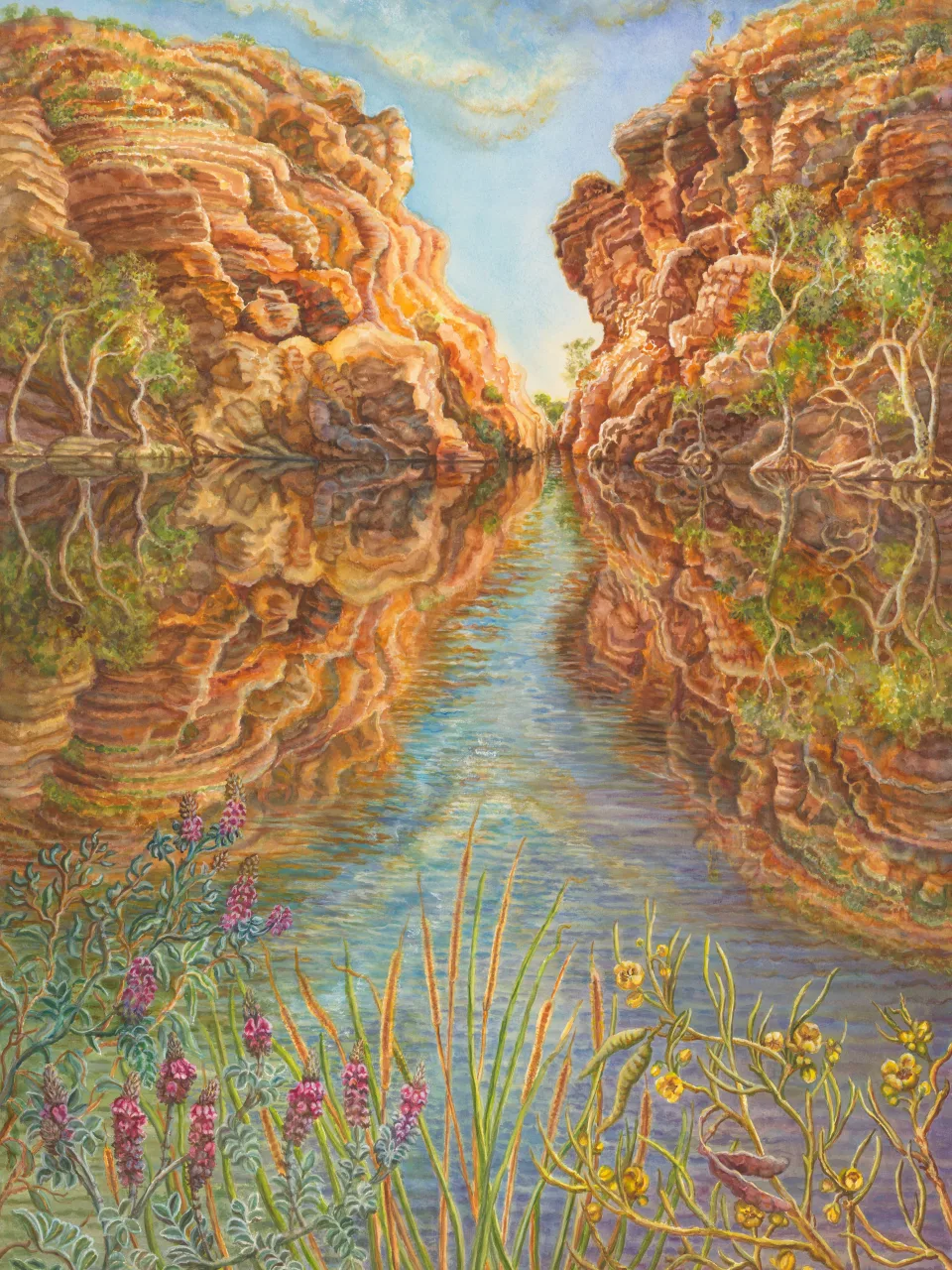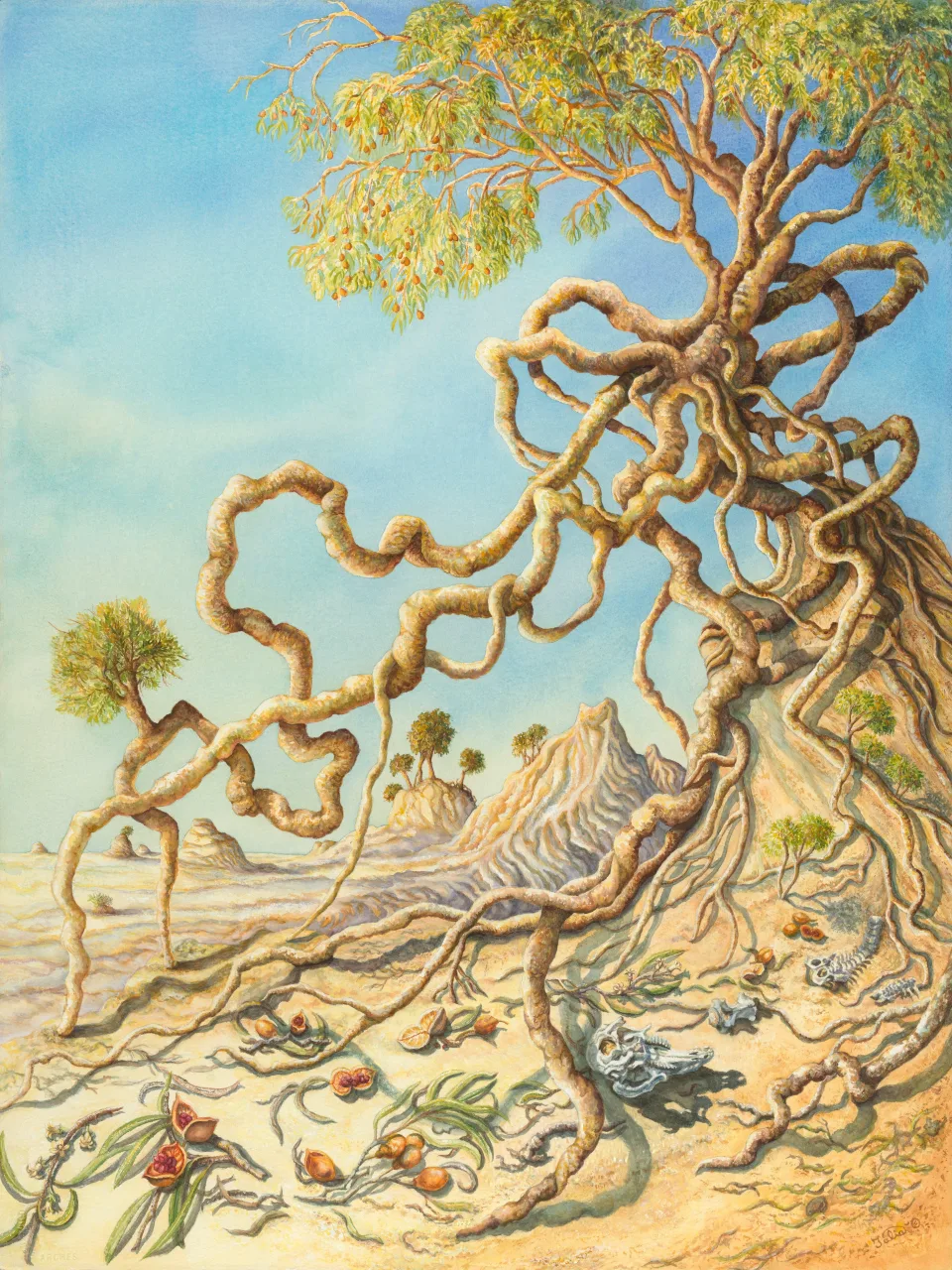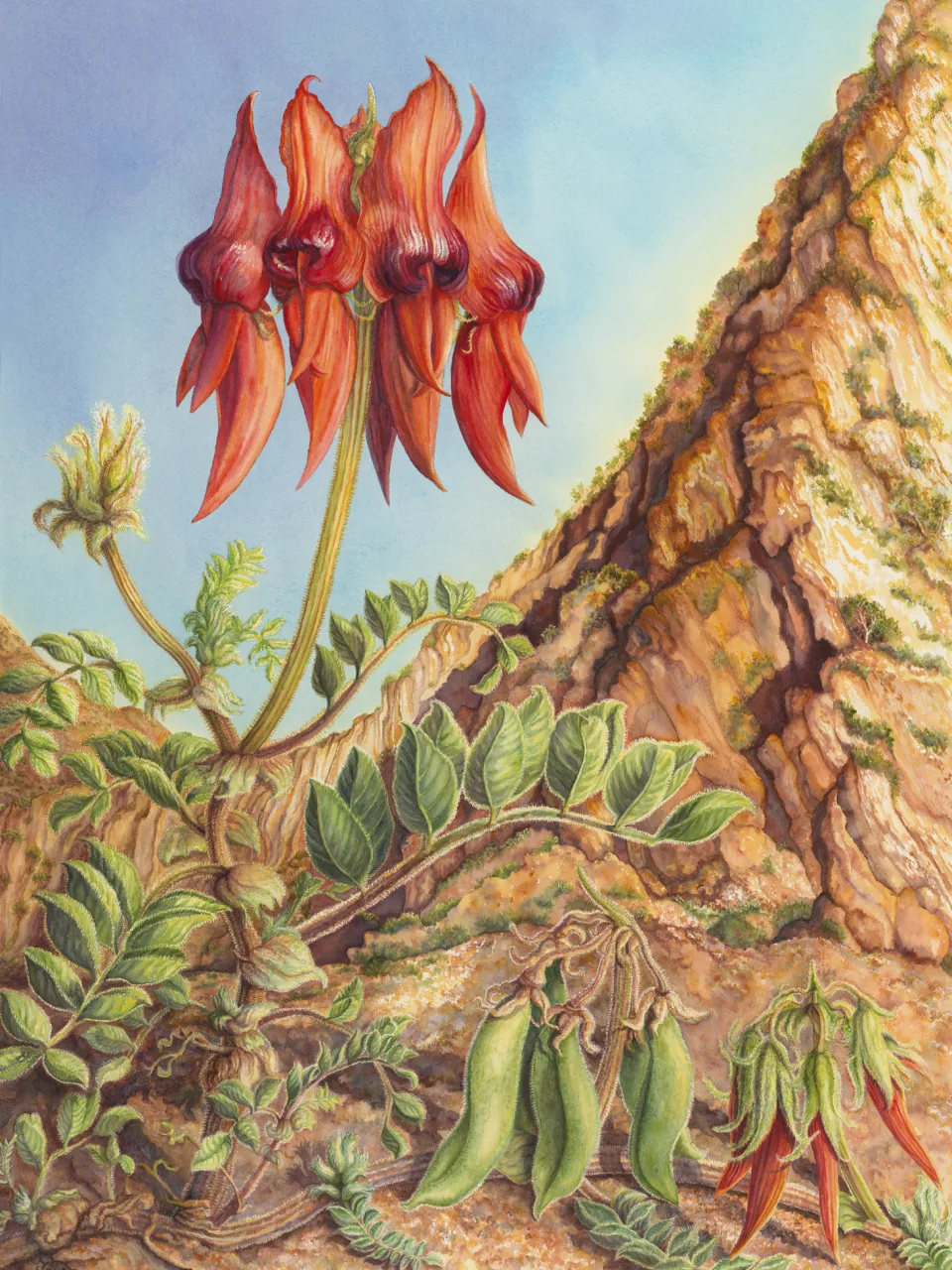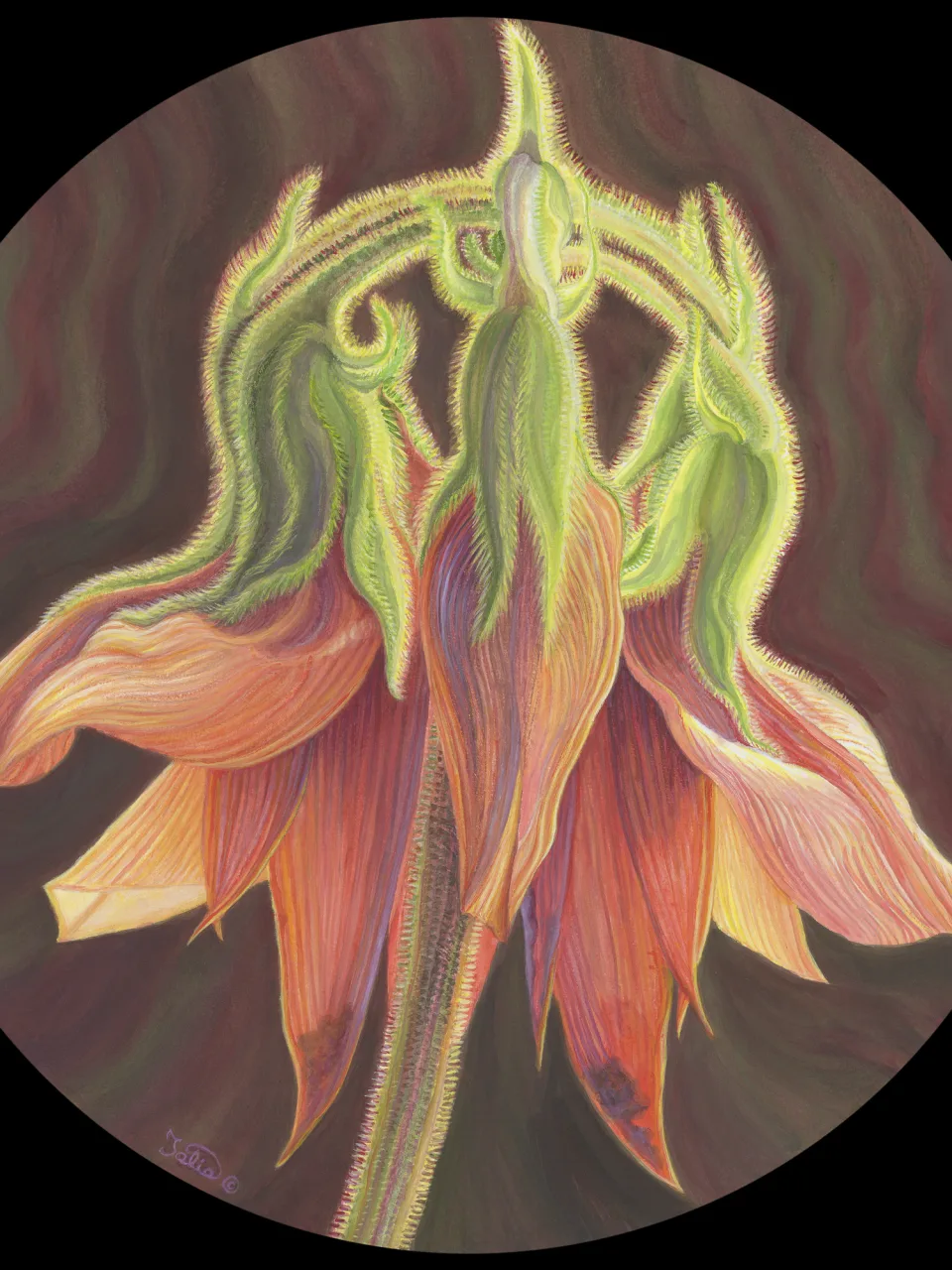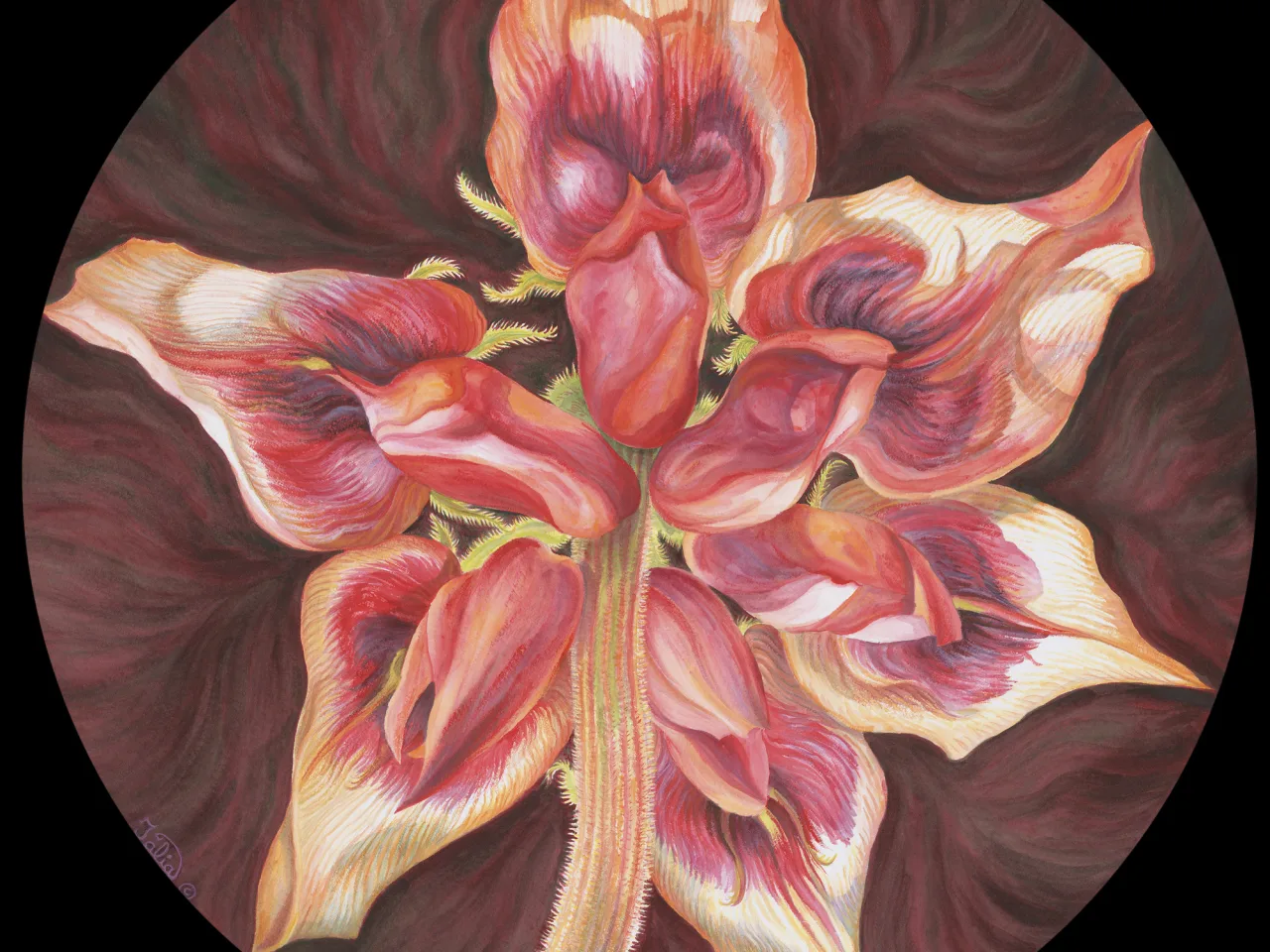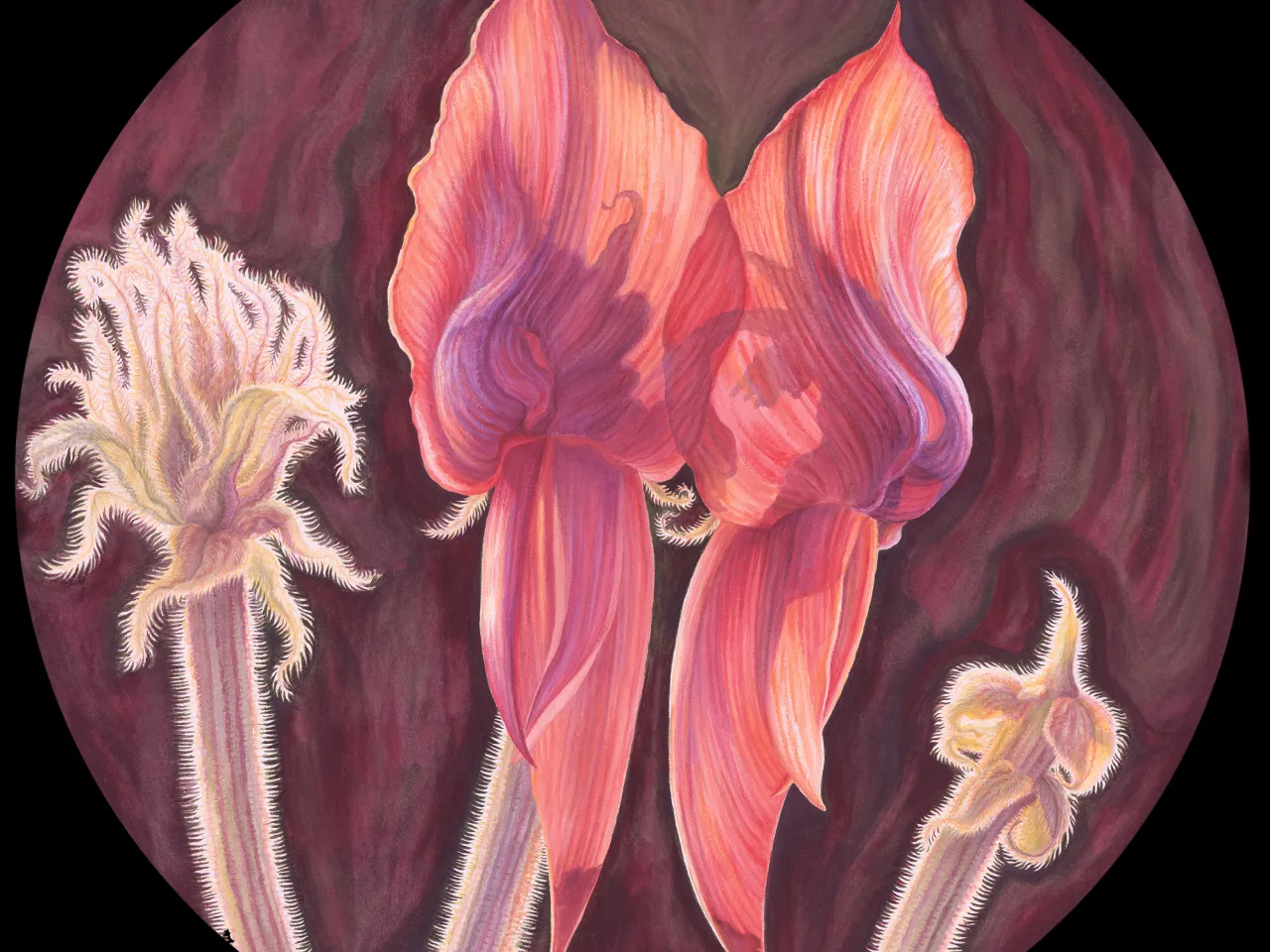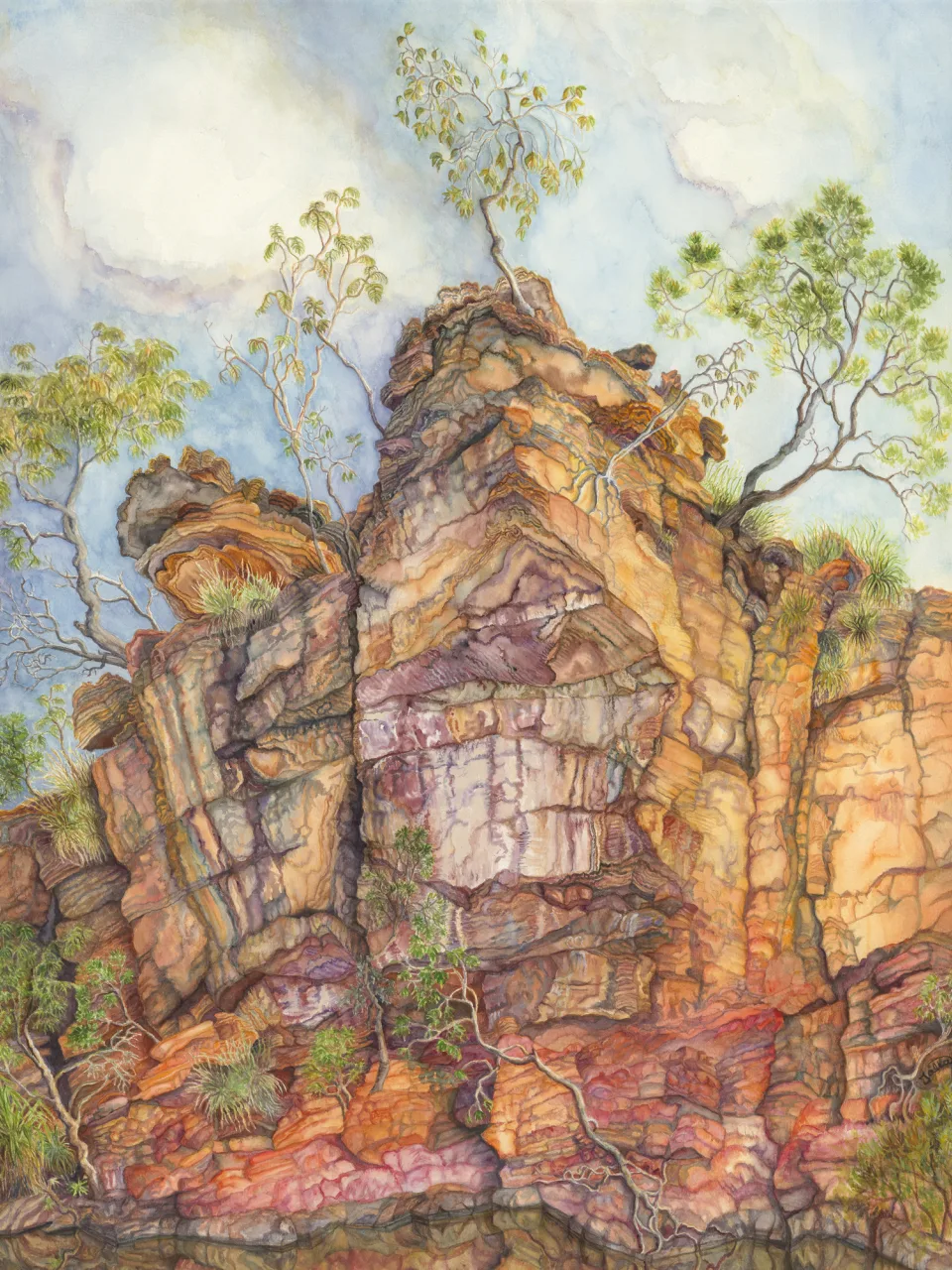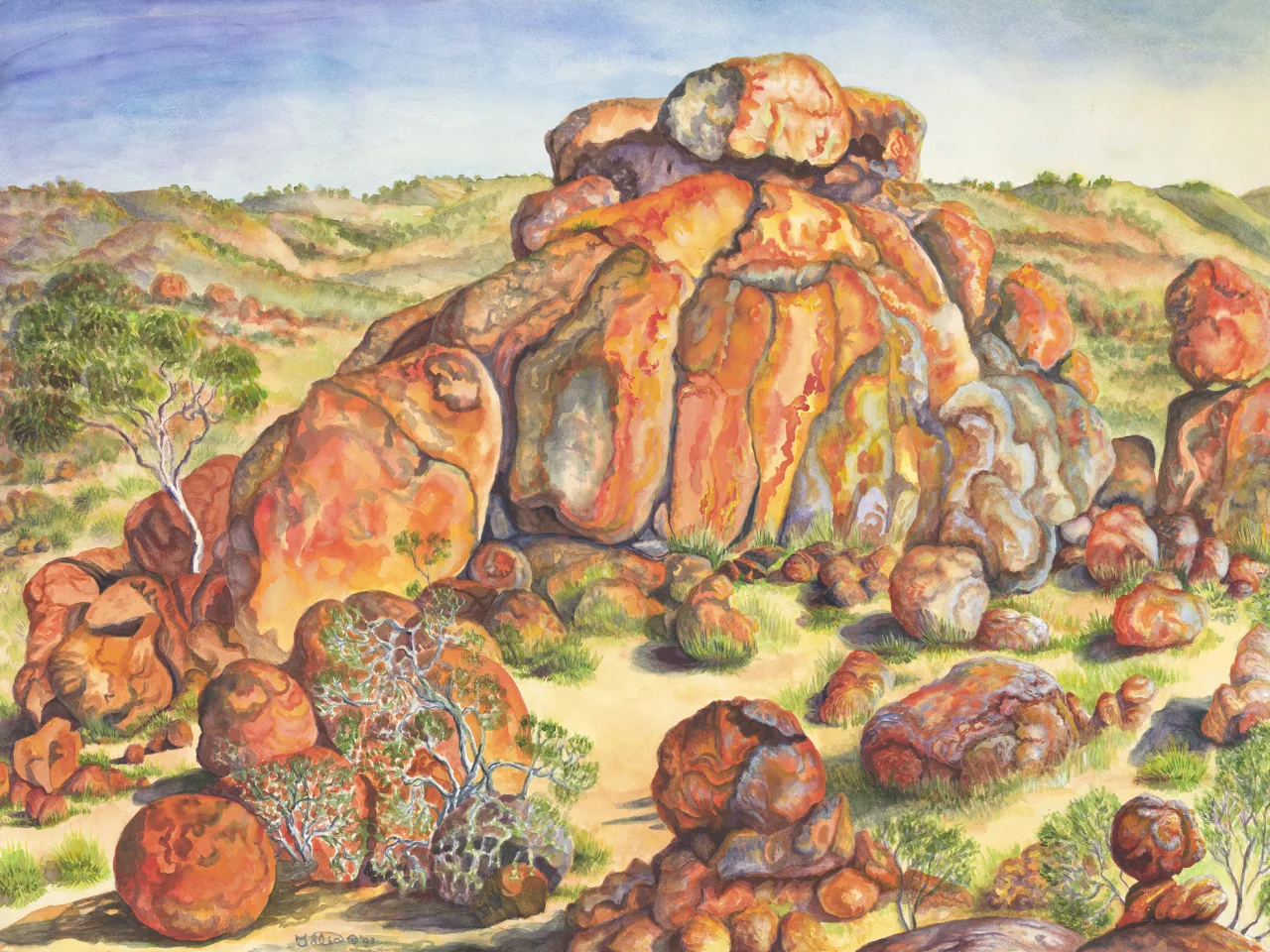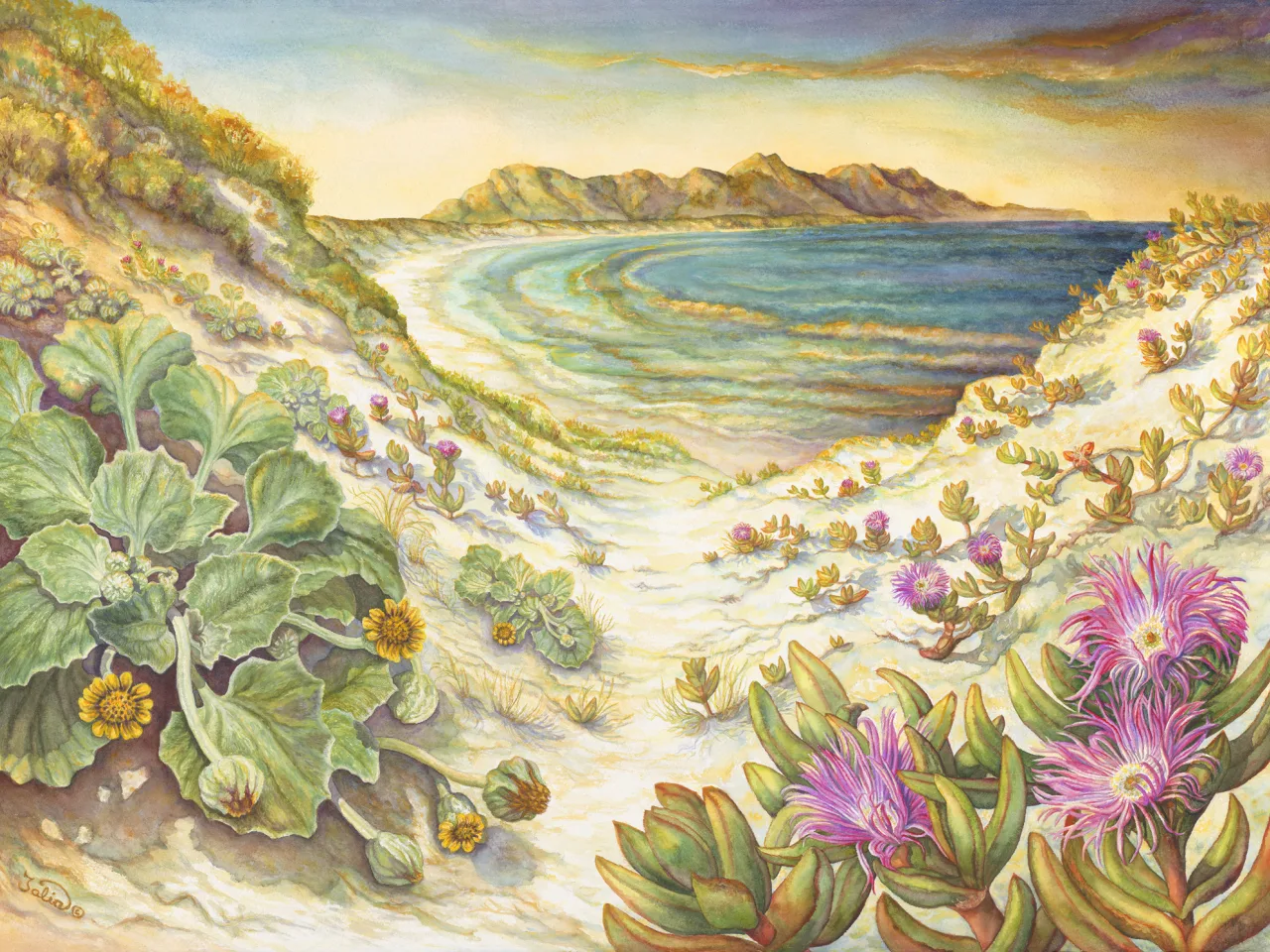Artwork 6 In a Gondwanan Rainforest—Primordial Fern Grotto (Tasmania)
Section 6
Ferns and Fern Allies
Southwest National Park, Tasmania, Tasmania
- 1. Blechnum wattsii (hard water fern)
- 2. Dicksonia antarctica (tree fern)
- 3. Phymatosorus pustulatus (kangaroo fern)
- 4. Tmesipterus obliqua (common fork fern)
Artwork 6
Buy a print
Limited edition giclee archival quality print on 310 gsm Ilford cotton rag (from an original work in watermedia on watercolour board, 76 cm high x 51 cm wide)
from the artist
Beautiful grottos like the one in this painting can be readily discovered by visitors to the primeval remnant rainforests of south-west Tasmania.
While exploring a track to the Western Arthurs, I entered a dense cluster of giant Nothofagus (Antarctic beech) trees, which suddenly opened up to reveal a small pool surrounded by a multitude of ferns. There were majestic tree-ferns (Dicksonia antarctica) swathed in mosses and hanging plants, accompanied by pink and green ground ferns. It was a cool, restful, and magical place, ideal for sitting on an ancient fallen log to sketch and think. Sunlight touched the central tree-fern perched on an island of tangled moss-covered roots, and inspired this artwork.
This grotto had flourished because the ancient Nothofagus tree providing me with a place to sit and rest had opened up the canopy to sunlight when it fell. Tree-ferns like Dicksonia need sunlit areas to reproduce, and they had seized their opportunity. Such ferns are amongst the oldest members of the botanical world, with fossil relatives clearly identified from at least 325 mya, and ancestors with fern-like features appearing much earlier in the fossil record (Kenrick & Davis, 2004, pp. 35–44). Tree-ferns like Dicksonia reproduce by releasing copious quantities of spores—800 million spores per year has been estimated for an average-sized Dicksonia antarctica—and this provided an ideal site for them to germinate (Garrett, 1996, p. 10).
Hanging from the trunk of the tree-fern is a fern ally with ancient lineage, Tmesipterus obliqua (common fork fern). It has apparently changed little in 400 million years, from ancestral Rhynia plants, which were among the earliest “higher” land plants discovered in the fossil record (White, 1986, pp. 66). It is called a fern ally because it is not a true fern, and actually has no roots or true leaves.
A common fork-fern is hanging from the far right tree-fern, while climbing up the trunk of the far left tree-fern is another epiphyte. This one, however, is a true fern, Phymatosorus pustulatus, with an appropriate common name—“kangaroo fern”—reflecting the kangaroo paw shape of many of the fronds.
In the foreground is Blechnum wattsii (hard water fern), which can be the dominant ground cover in rainforest and wet sclerophyll forest. It has attractive bronze pink new growth, and can climb Dicksonia antarctica also, although those in this fern grotto were only growing on the mossy ground.
